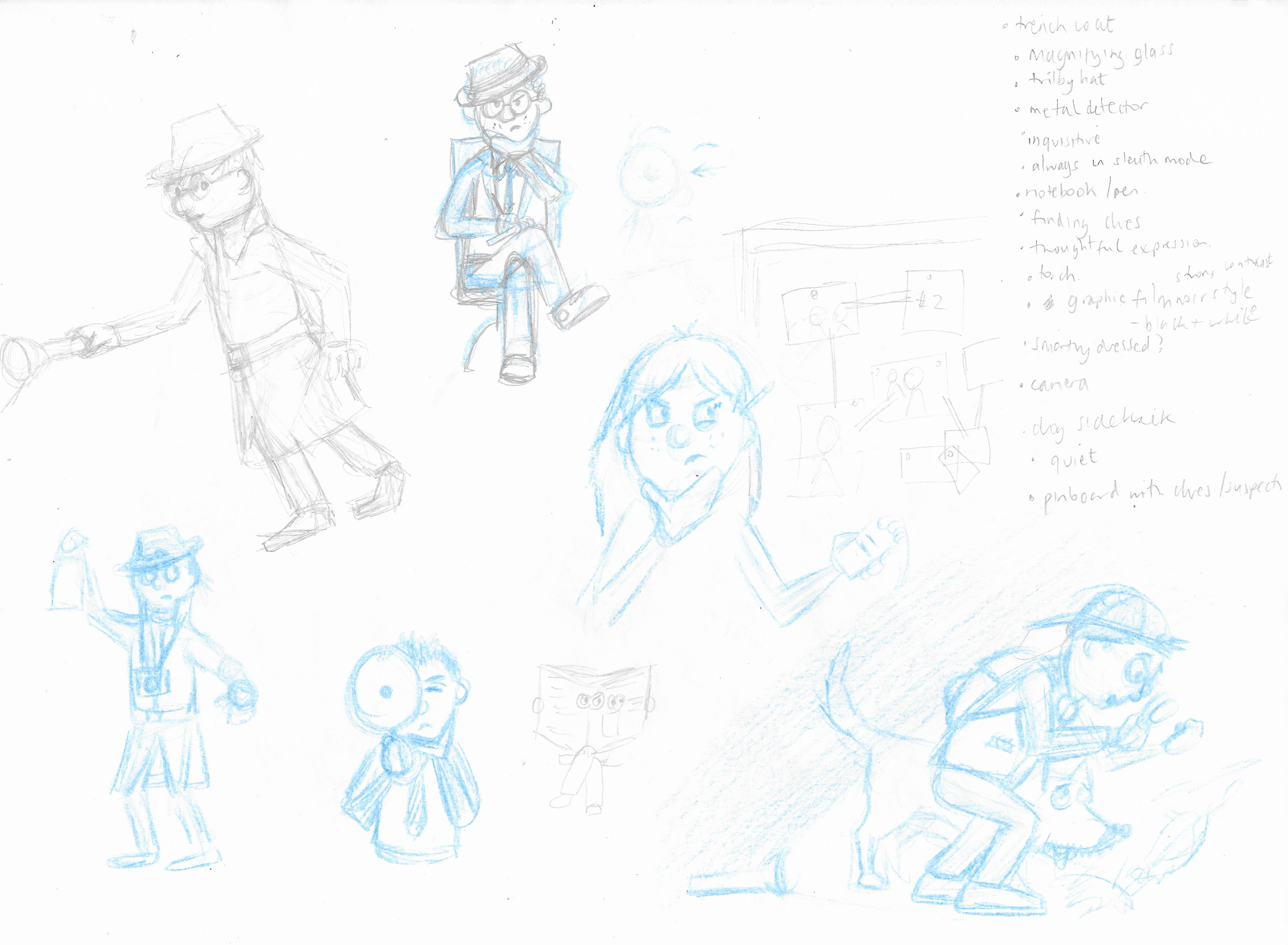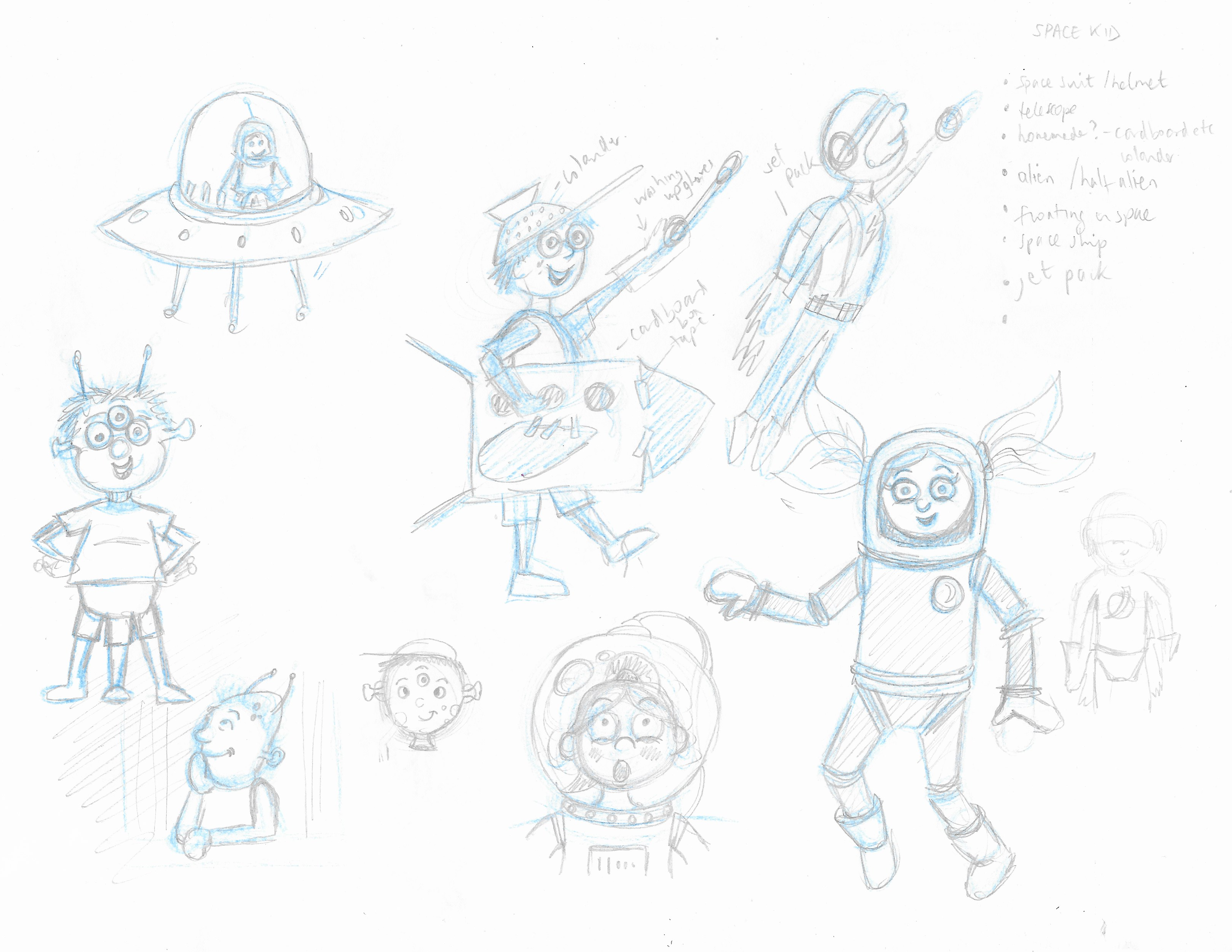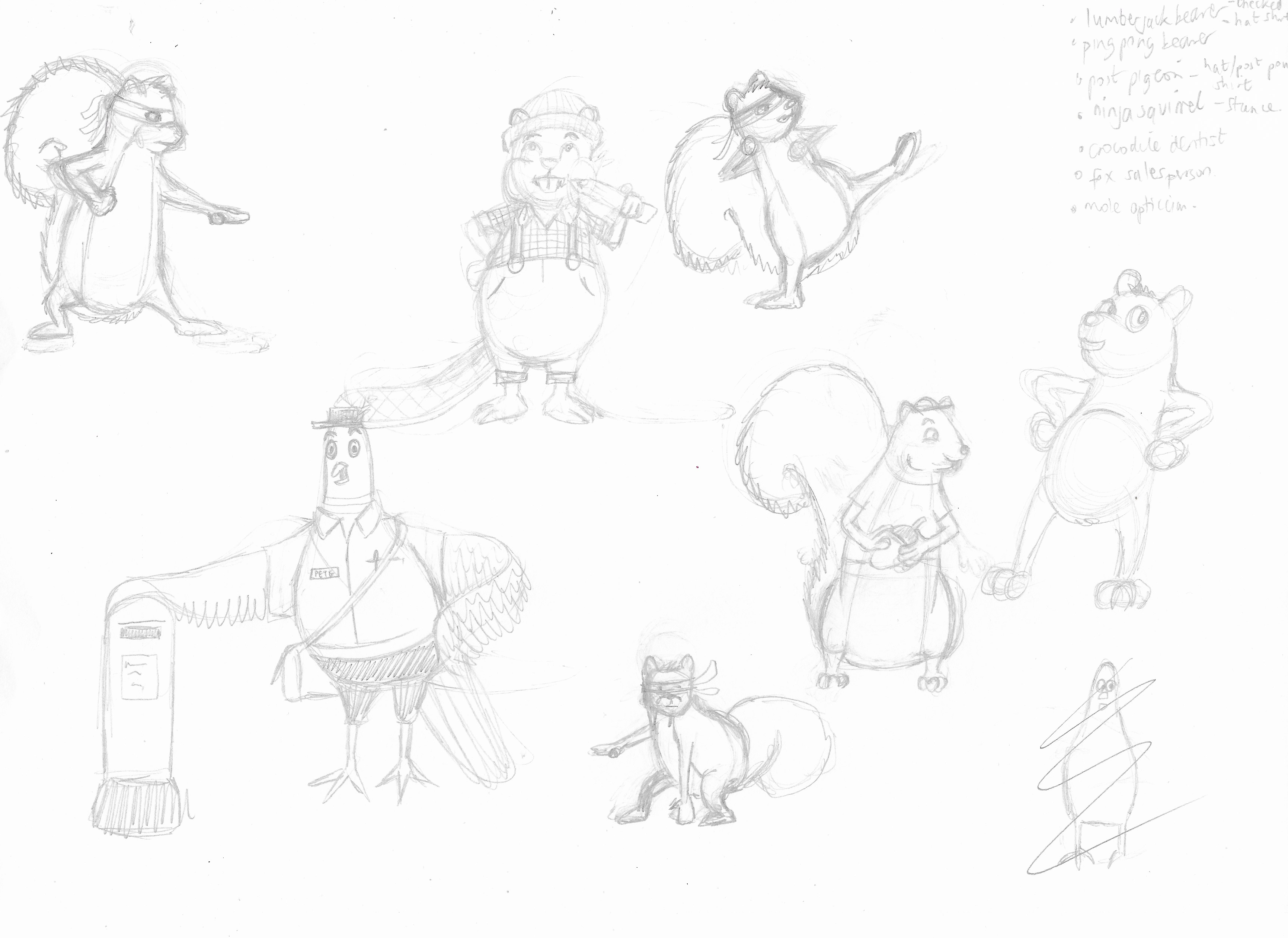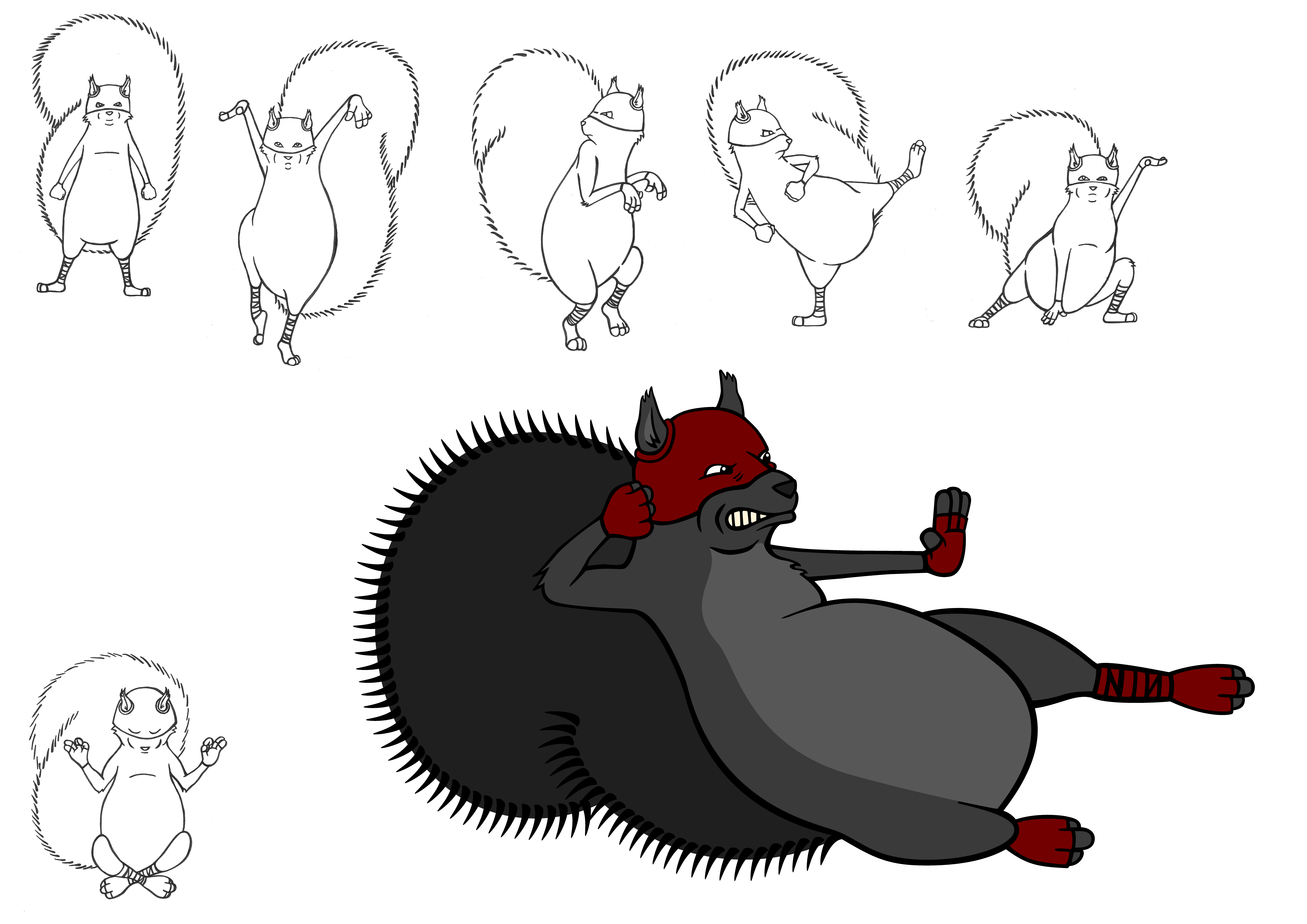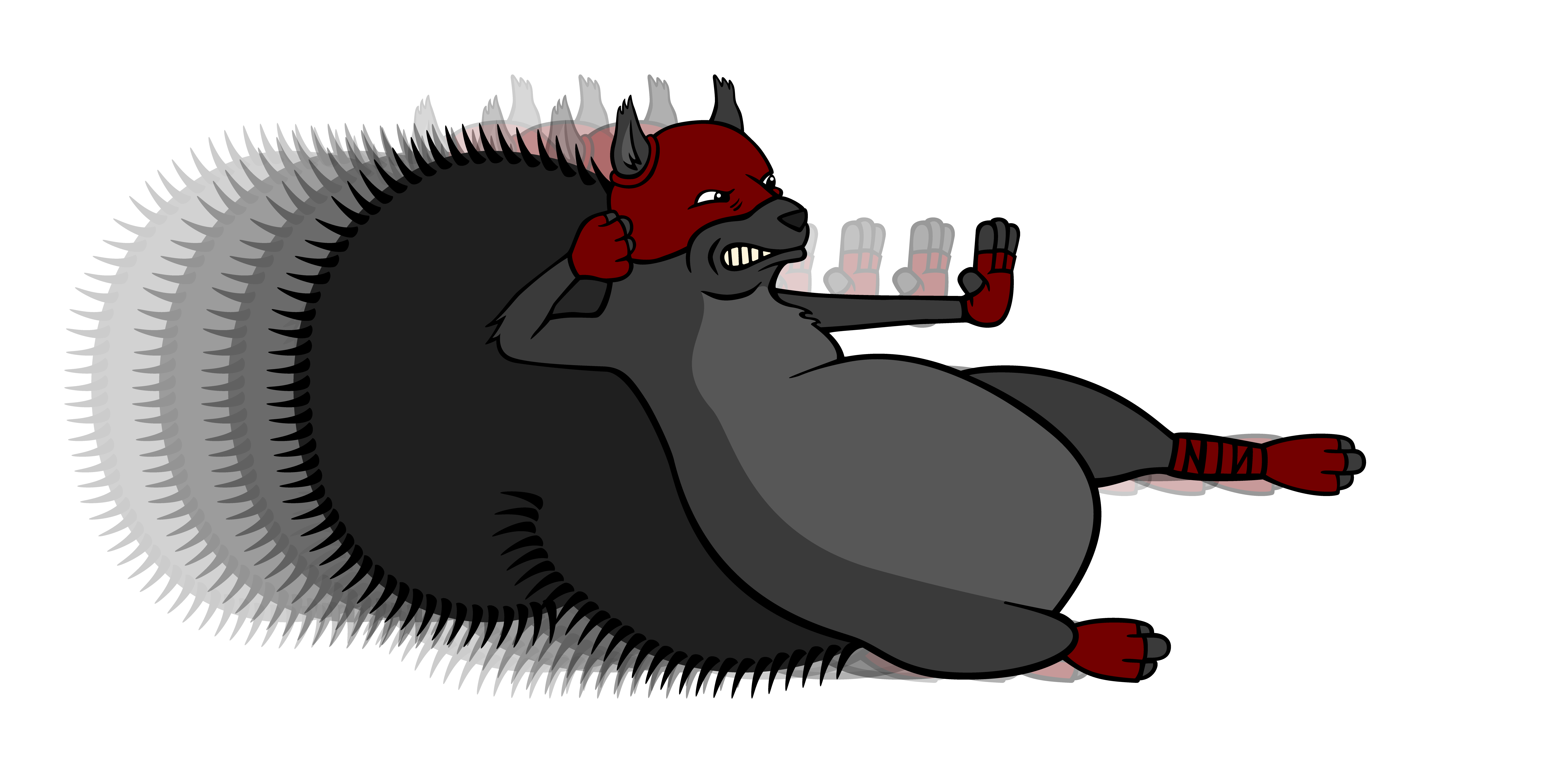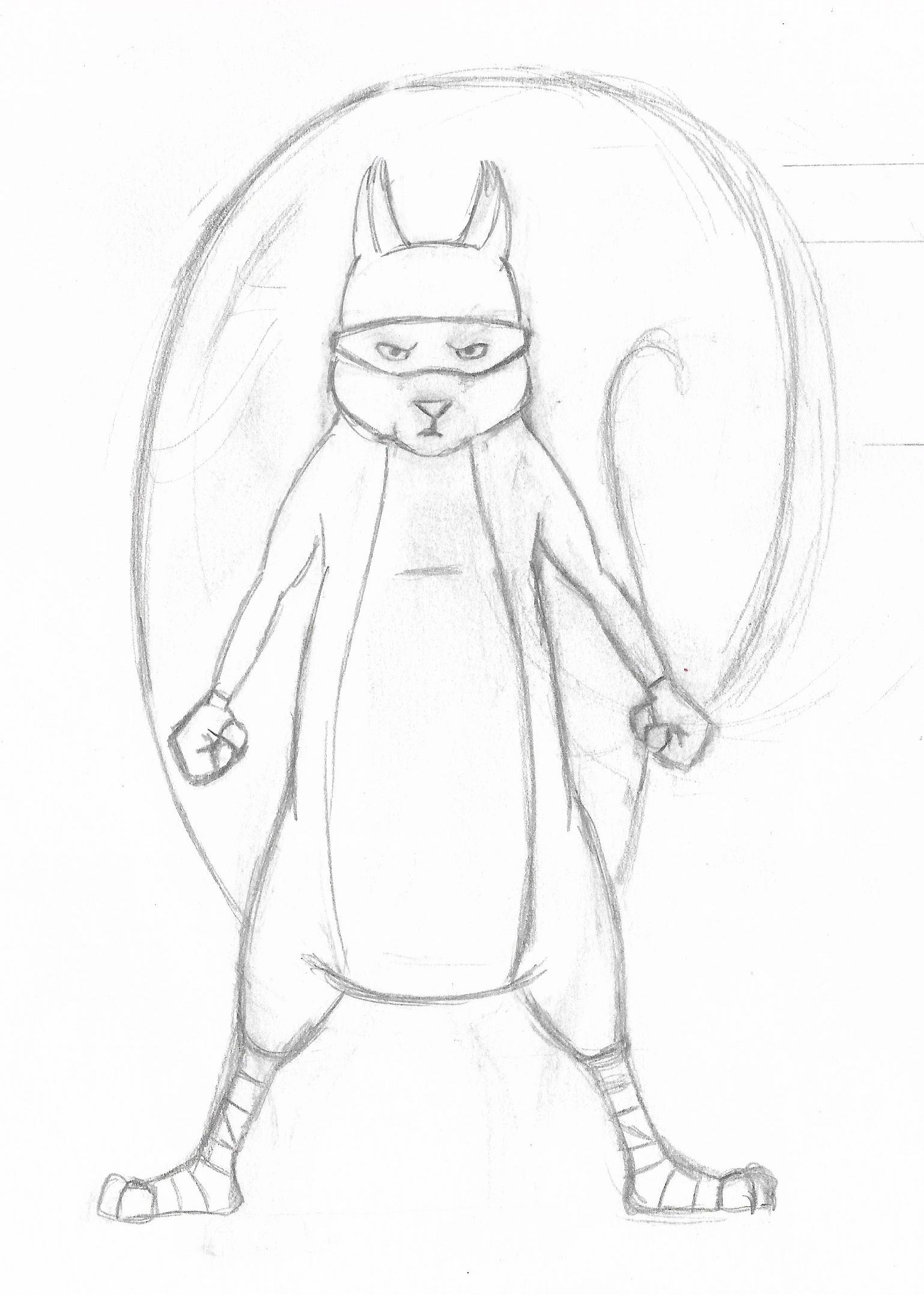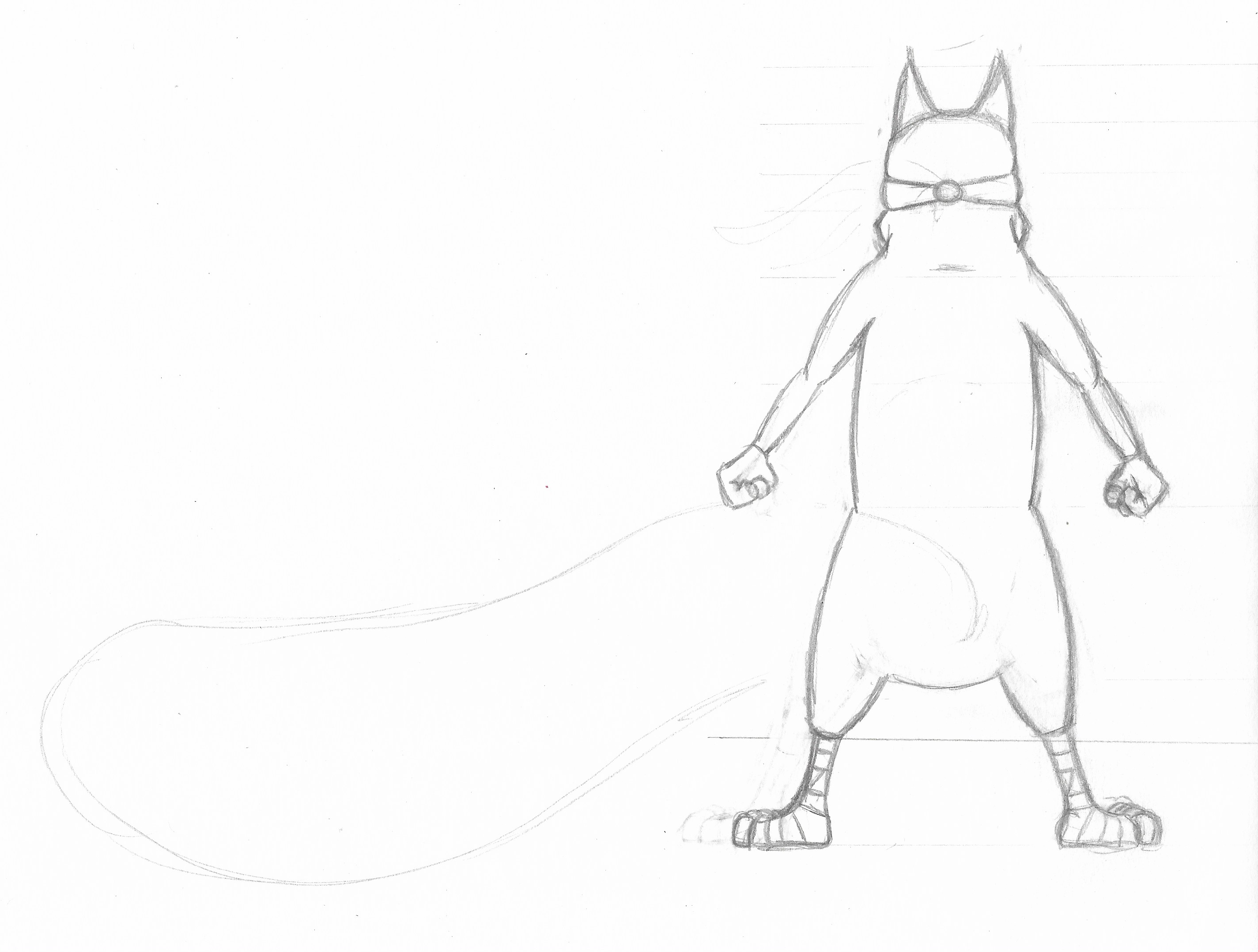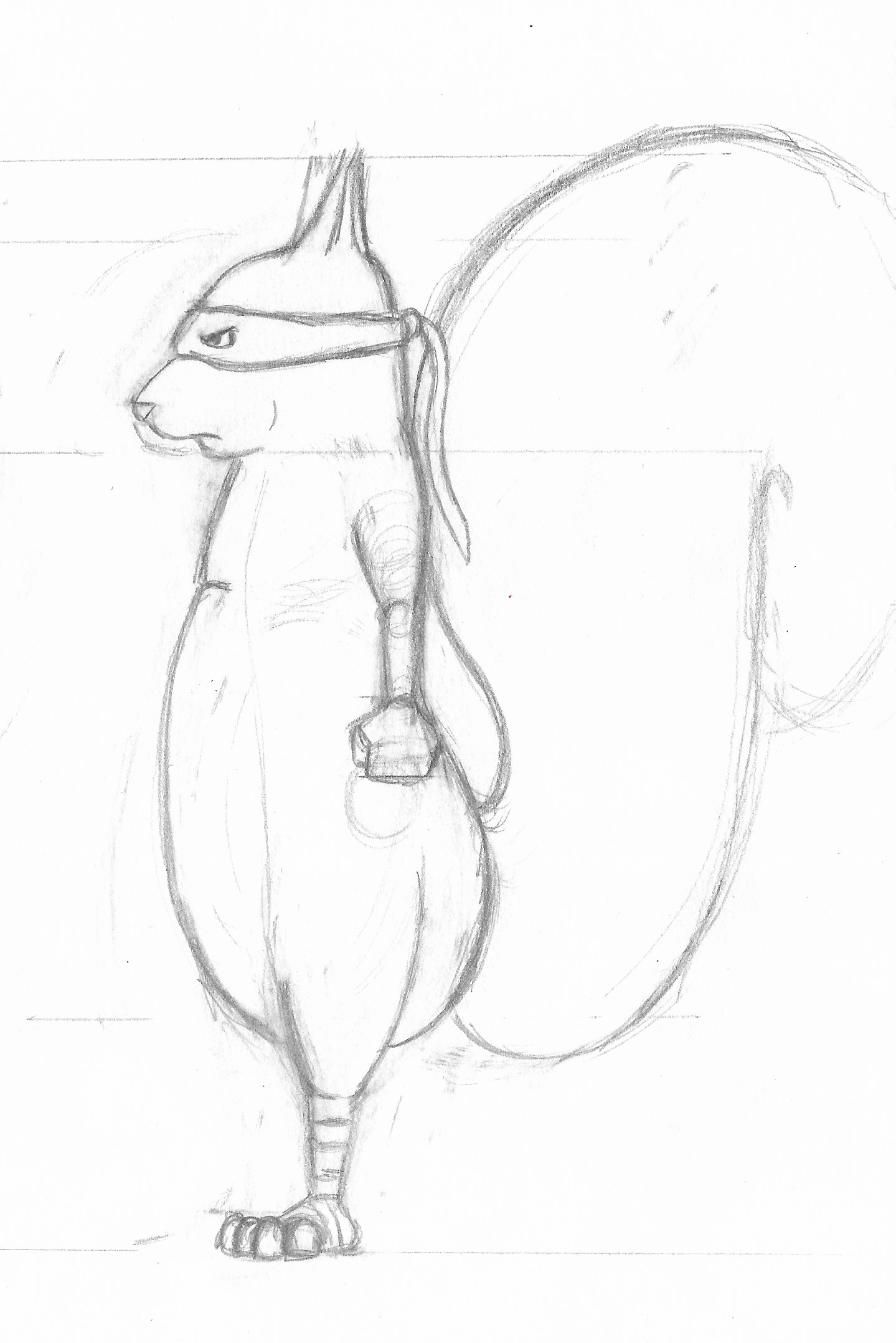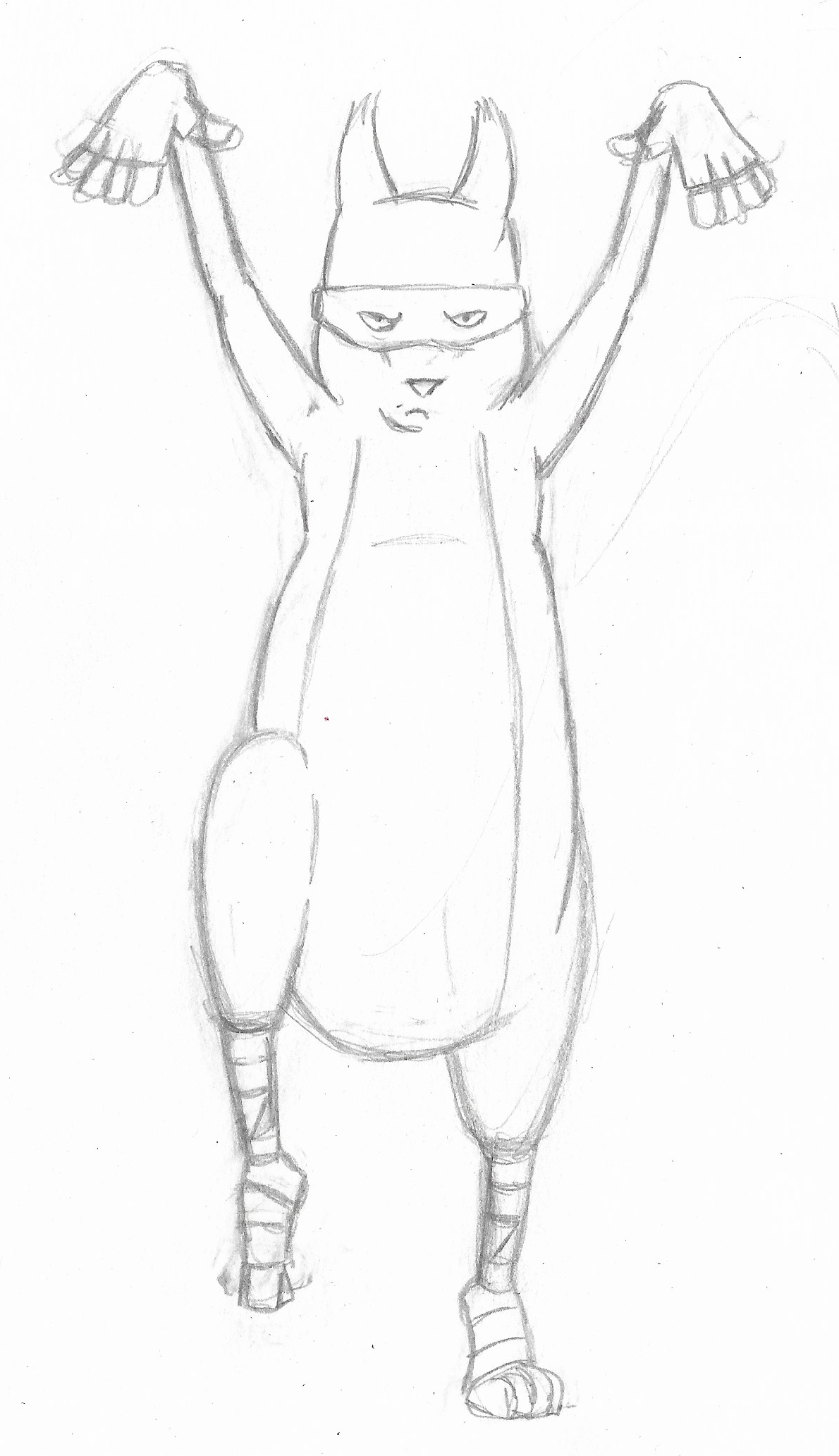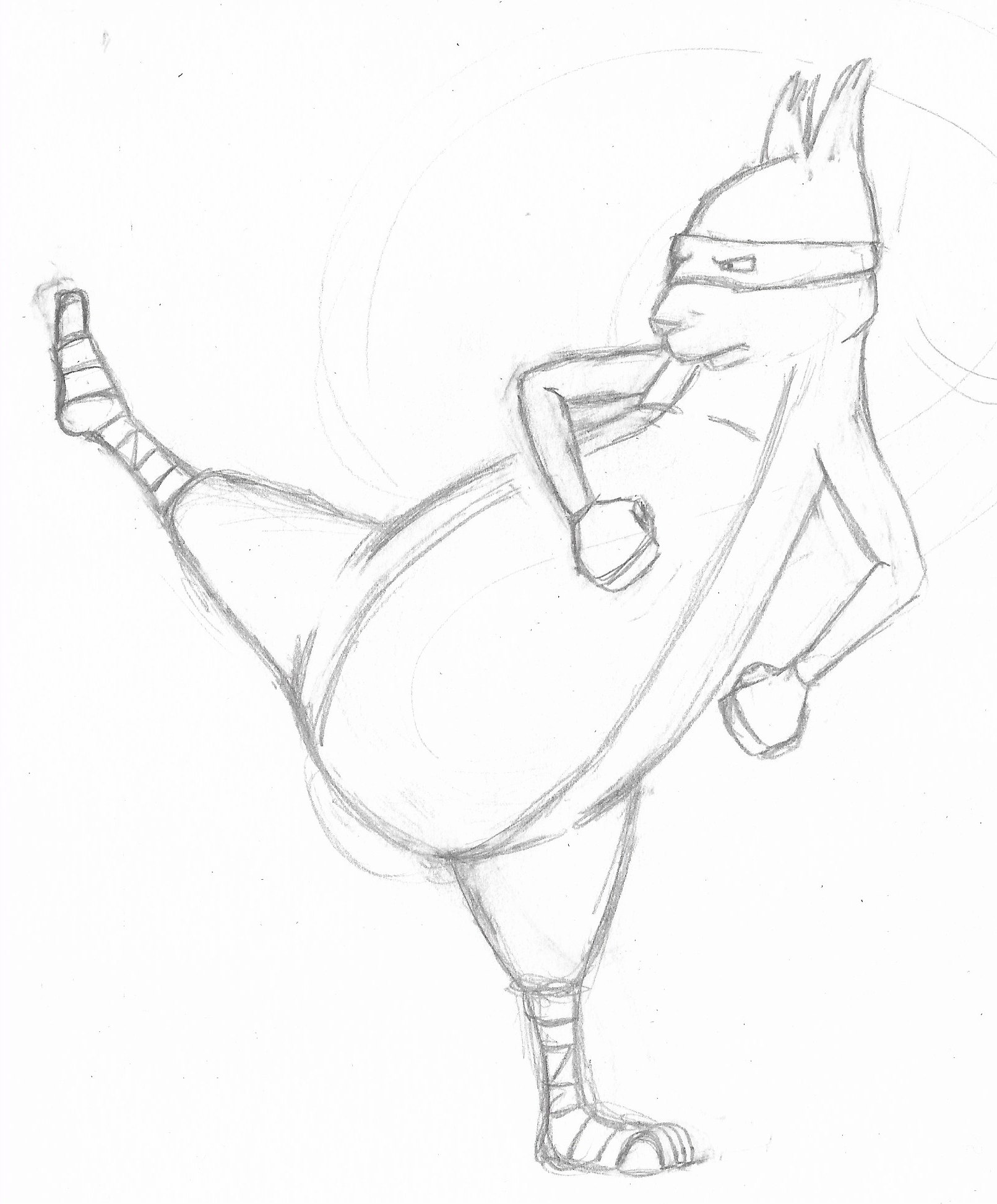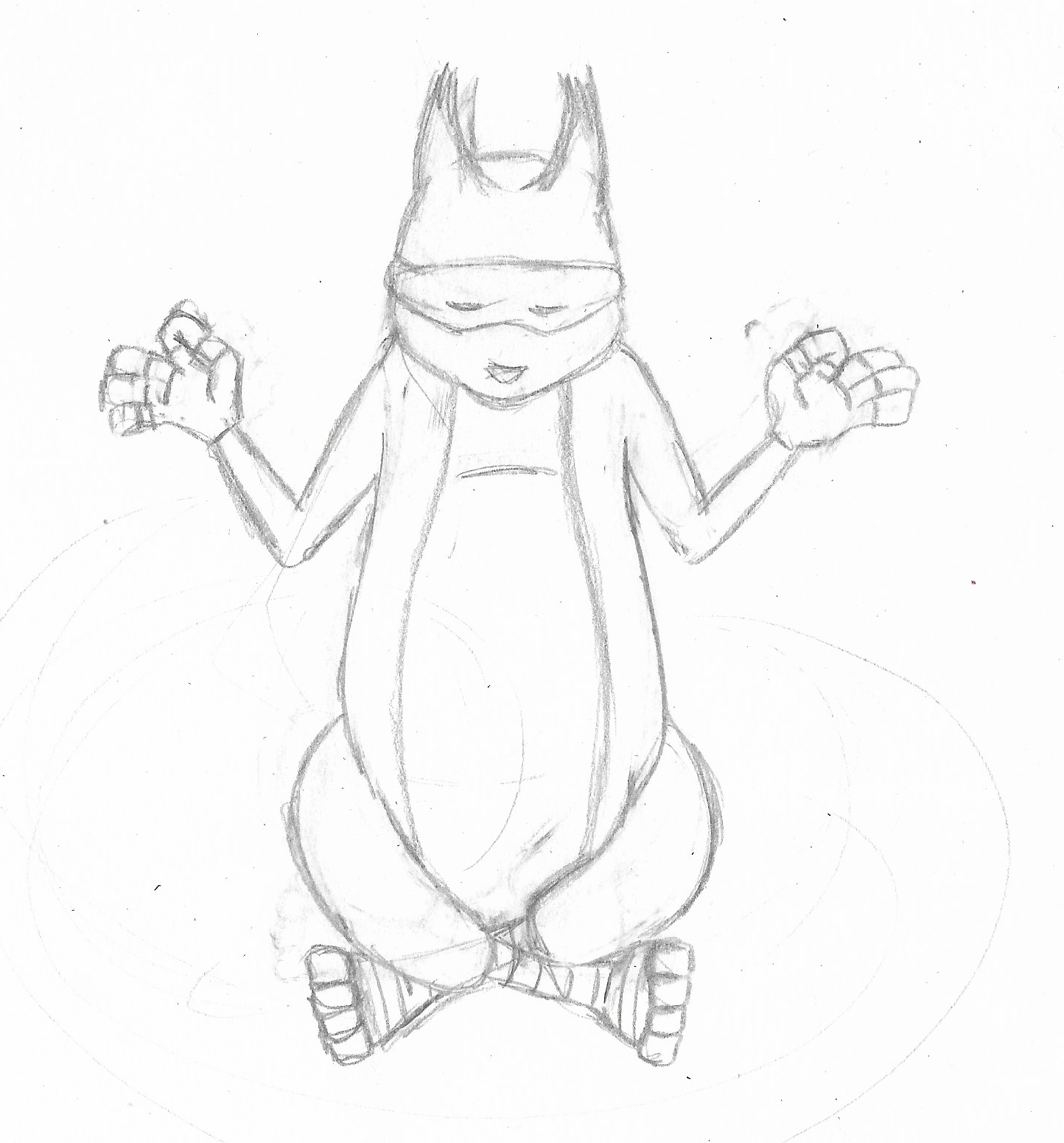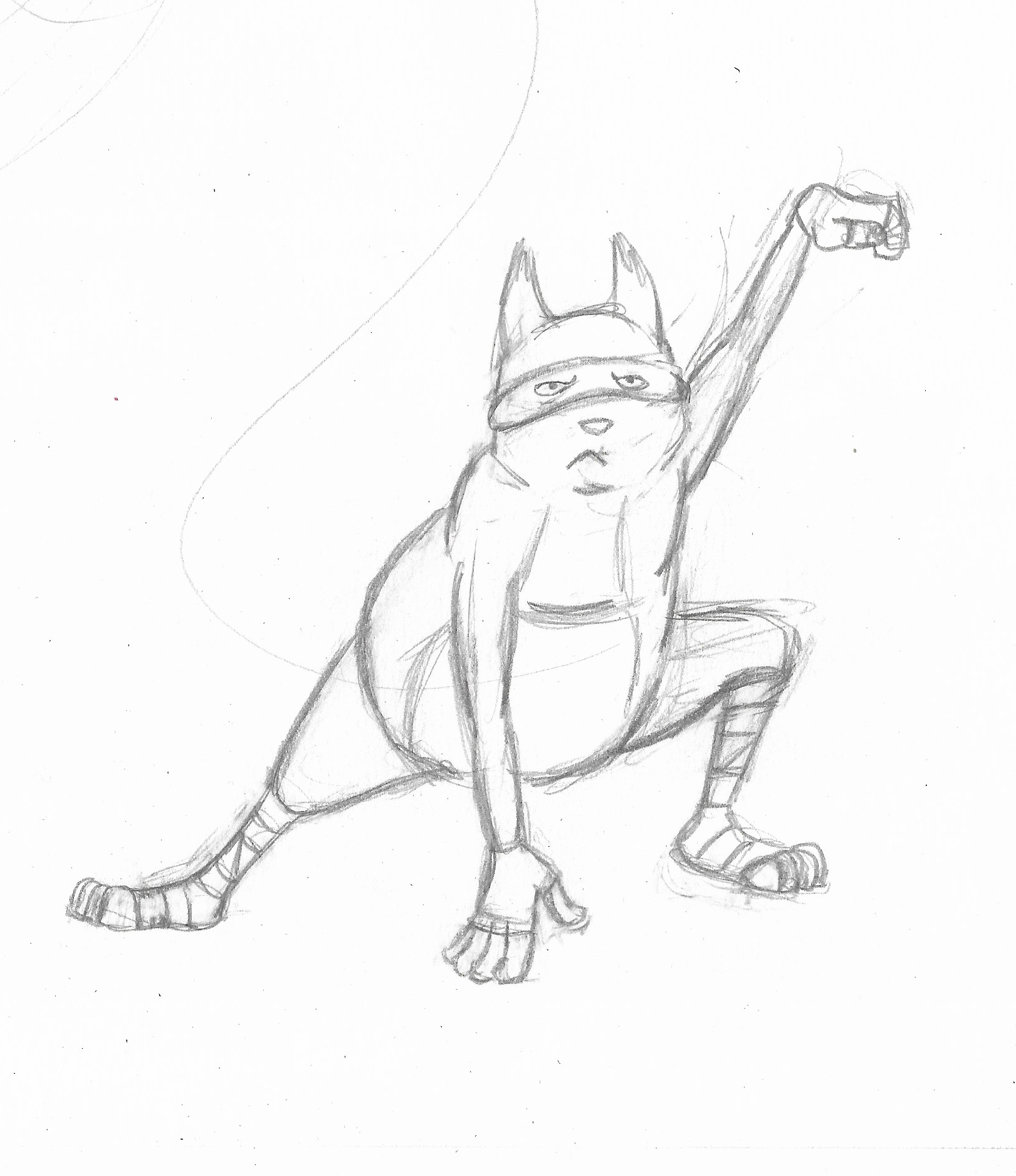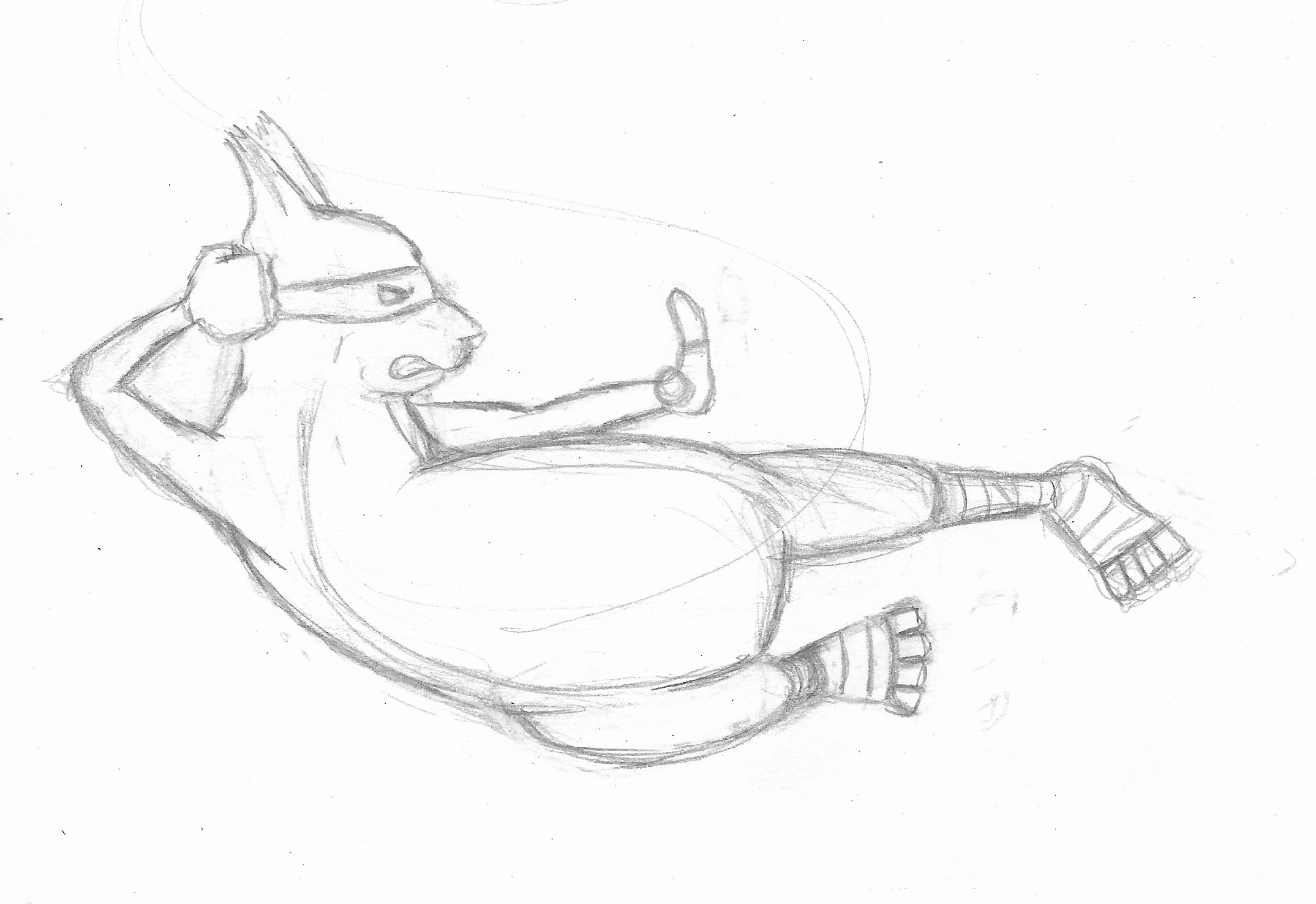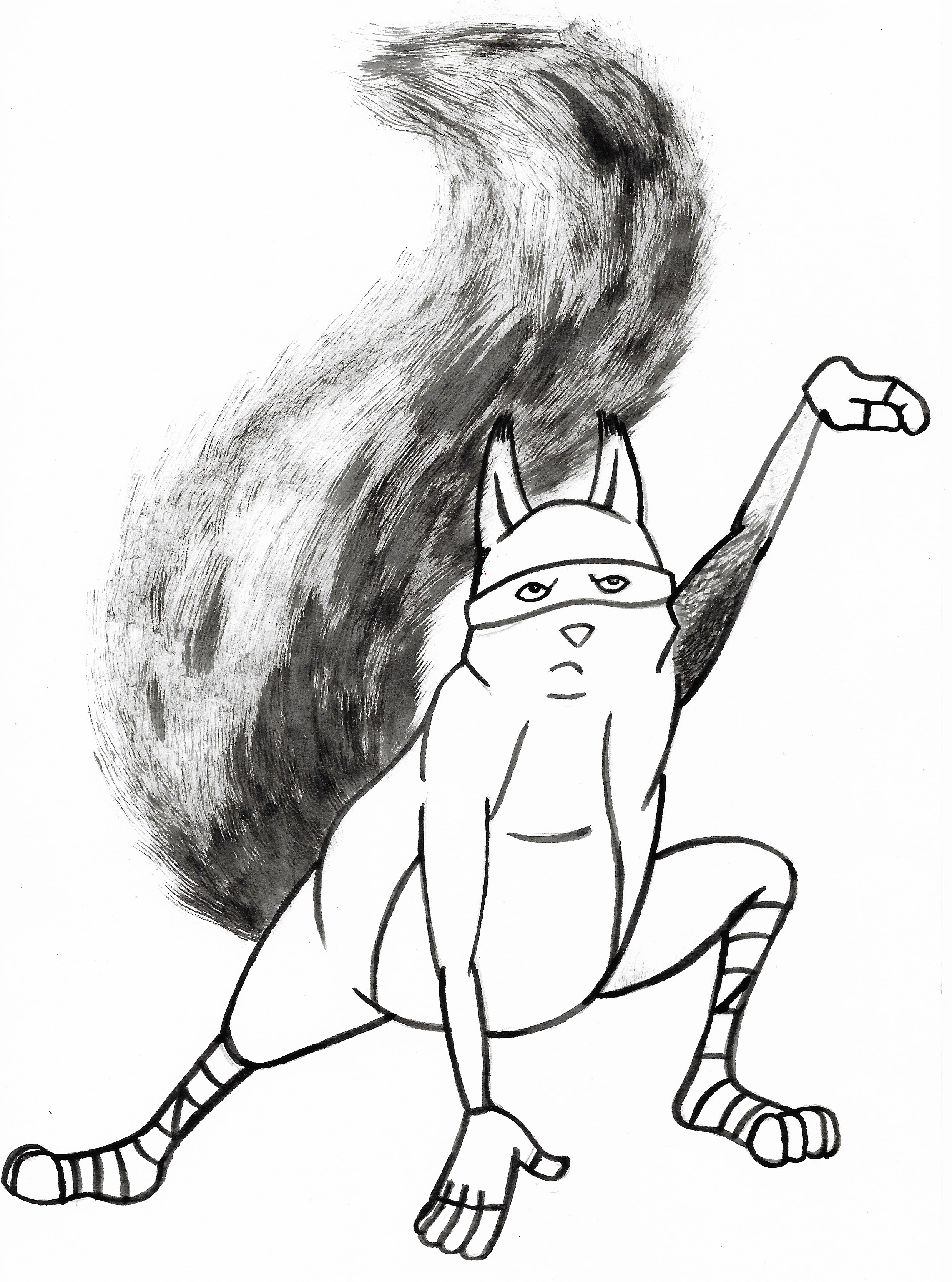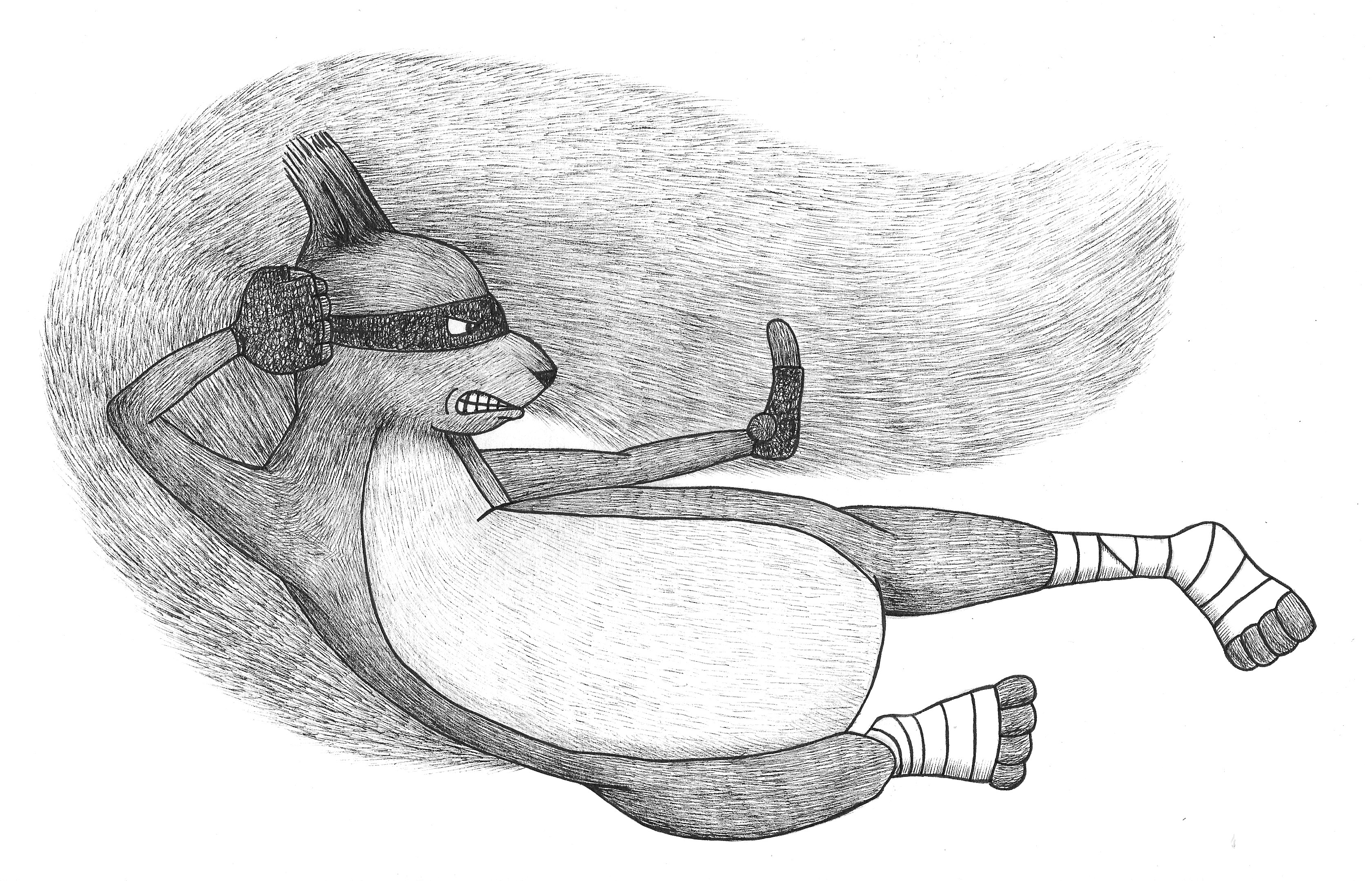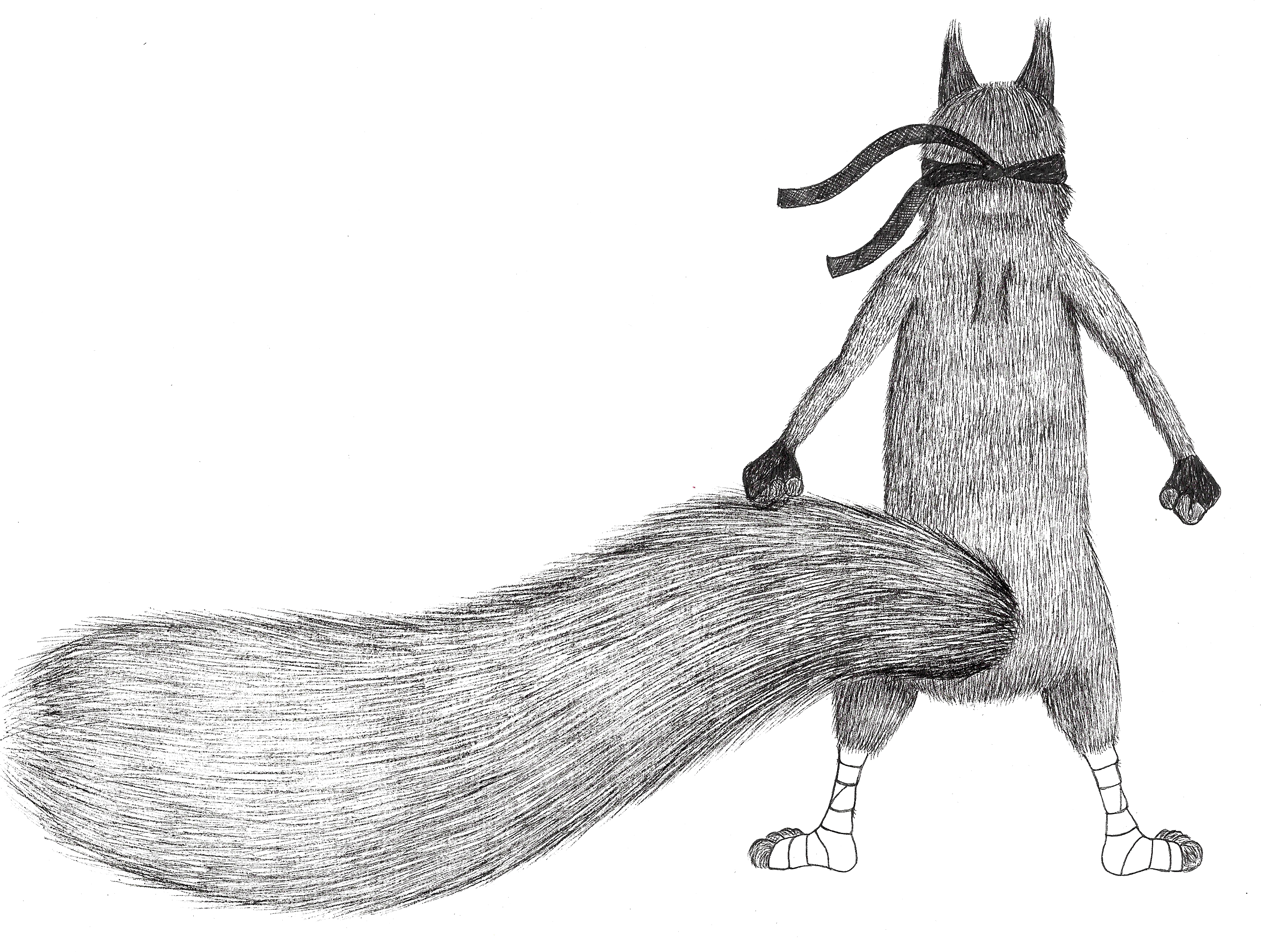Brief
For this exercise you are to invent a character. there are three options for the character description:
- Young Detective
- Space Kid
- Animal Character
Sketch up some rough ideas for each of these potential characters.
Once you have sketched up some rough ideas, draw a finished colour character design (or digital drawing) on an A3 sheet of paper or card.
Research
I began this exercise by looking up all of the suggested examples of children’s characters in the introduction (see references below). The ones that I found most visually appealing were:
Ronald Searle’s St Trinian School – I liked the dark humour and the deceptively ‘quick sketch’ style, which reminded me of Quentin Blake.
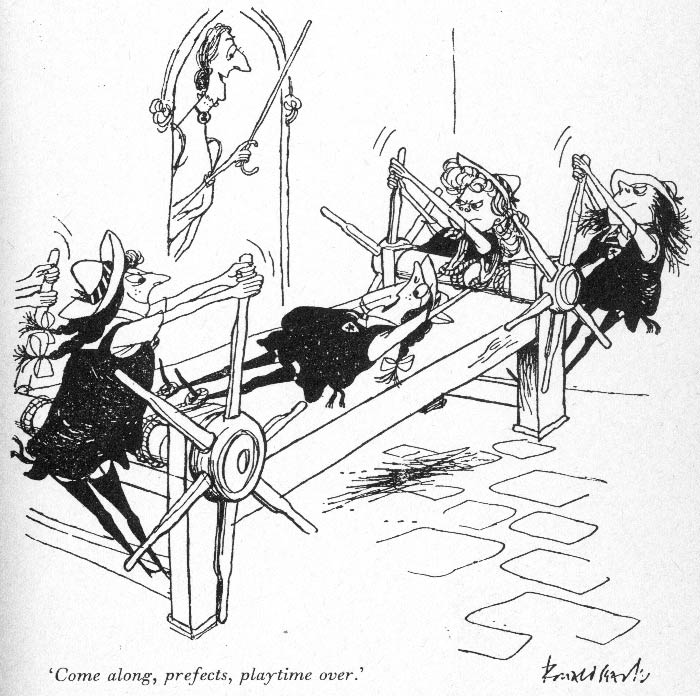
Paddington – particularly the illustrations by Peggy Fortnum and Fred Banbery. I thought Fortnum’s illustrations demonstrated how placing very few black lines accurately can be used to create an effective and accurate drawing. Banbery’s illustration were quite different to Fortnum’s, but I felt they really captured the essence of Paddington’s character and I liked the use of colour.
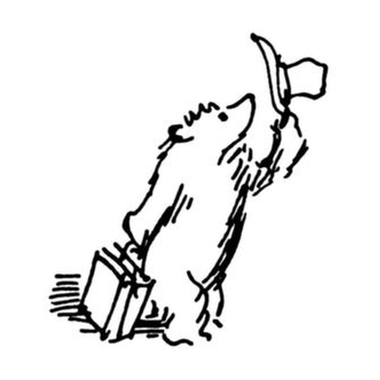
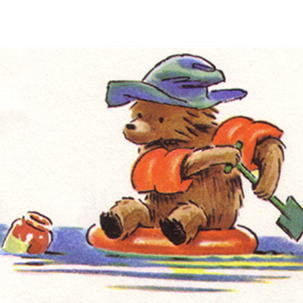
Finally, Luke Pearson’s Hilda particularly appealed to me as I liked the stylised, ‘cartoony’ design. From the examples available on his website, it is clear that Pearson makes excellent use of colour to set the mood and uses quite a subdued colour palette. I have added these books to my list of those to purchase at some point.
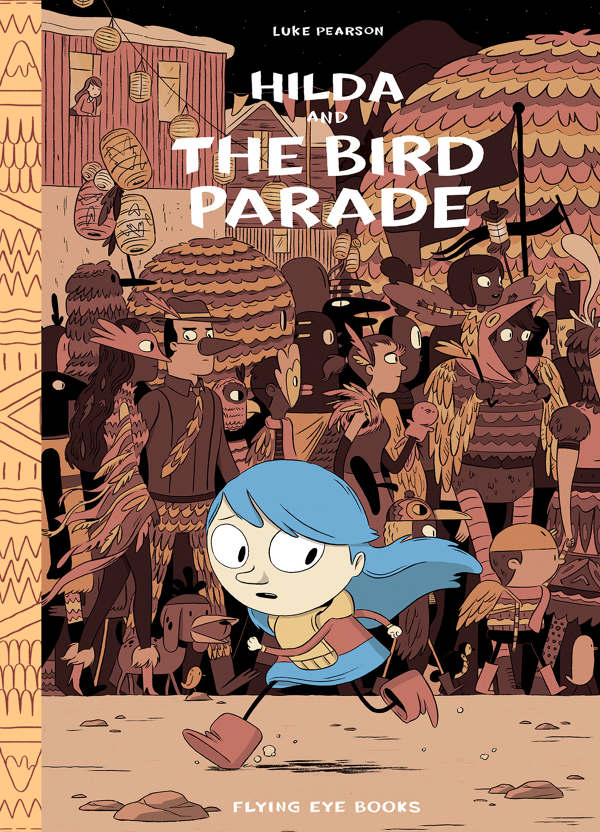
Next I created Pinterest boards for each of the three categories in the exercise.
I found that animal character examples were much easier to find and there was more variety. The detective examples, in particular, were all very similar in terms of the clothing and pose of the characters. It seems that once an animal is anthropomorphised the creative possibilities are more or less limitless.
Ideas
Once I had spent time looking at the examples, I moved onto doing some rough sketches for each character description. Perhaps I had been influenced and therefore constricted by my initial research, but I found it really challenging to think of many ideas for the Young Detective category. Most of them comprised of a character in a trench coat, rubbing his/her chin in contemplation! I think it would have been beneficial to have rough storyline to base the character on so I would have had more of a context. However, I was interested in the sketch I did at the bottom right of the paper, below, which shows a young boy breaking the trench coat fashion trend.
I found it slightly easier to come up with ideas for the Space Kid category and my ideas reflected this with a wider variety of characters, from a boy dressed up with a colander on his head in a cardboard box space ship to a half-boy, half-alien character.
The category I had the most enthusiasm for was the Animal Character category as I have always been a fan of these type of characters. However, I found myself having a creative block and starting to doubt whether I would be able to come up with a decent idea. The three character concepts I devised were a post pigeon, a lumberjack beaver and a ninja squirrel.
As stated in Assignment 2, I particularly like squirrels and I find their athletic ability quite astounding. Whenever I see them flying through the air and scrambling up trees, they always make me think of ninjas (I do have quite an overactive imagination) and this concept had been going around and around in my head for months, so I decided to use this exercise an opportunity to finally put it down on paper.
As I was considering this idea I recalled the animated DreamWorks movie Kung Fu Panda. I found some character design drawings from the film, which were entertaining, awe-inspiring and also extremely relevant in terms of the style and poses I wanted to try and replicate in my squirrel character.
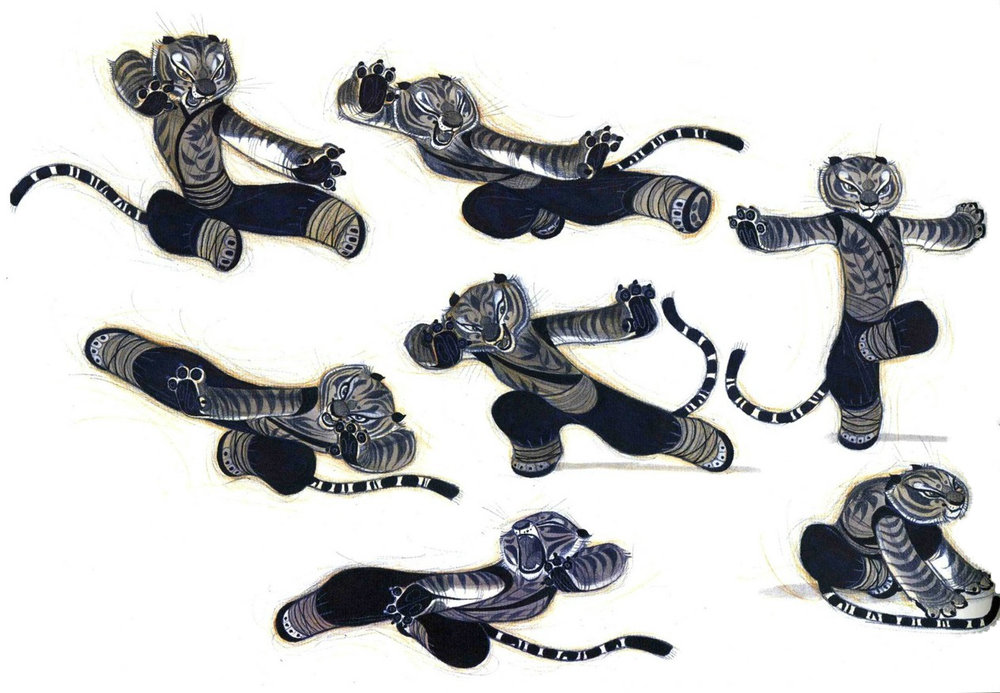
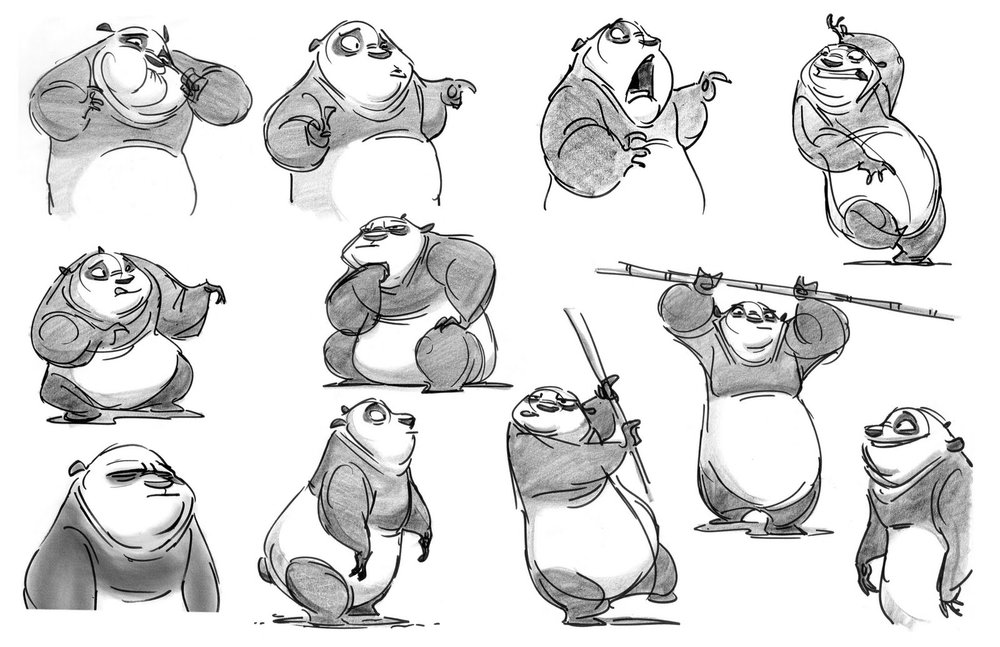
Developing Ideas
I decided to first have a go at developing my Young Detective character and drew some further sketches. However, my heart was set on the squirrel idea and although I was quite pleased with the first drawing, below, I did not feel the character was particularly strong.
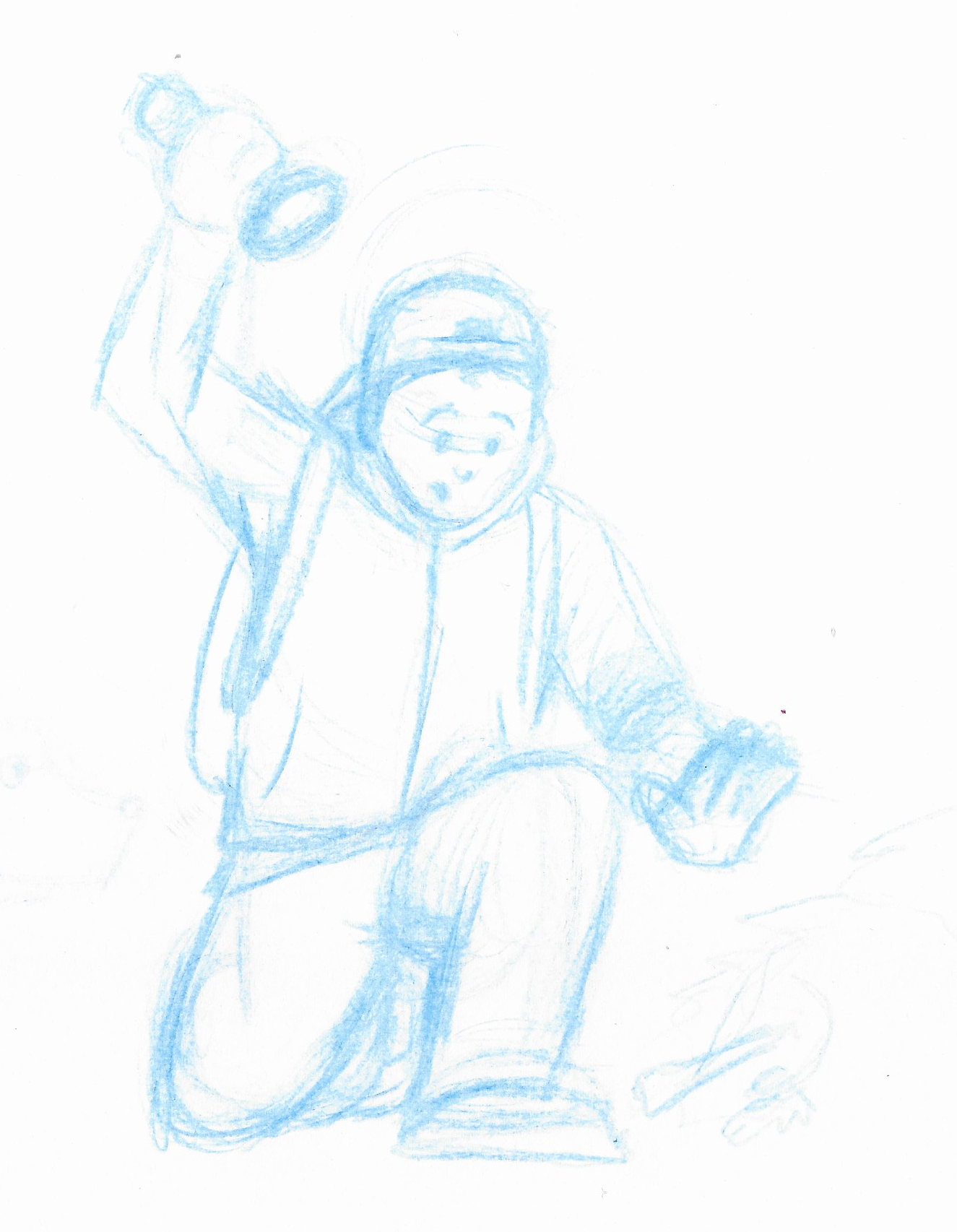
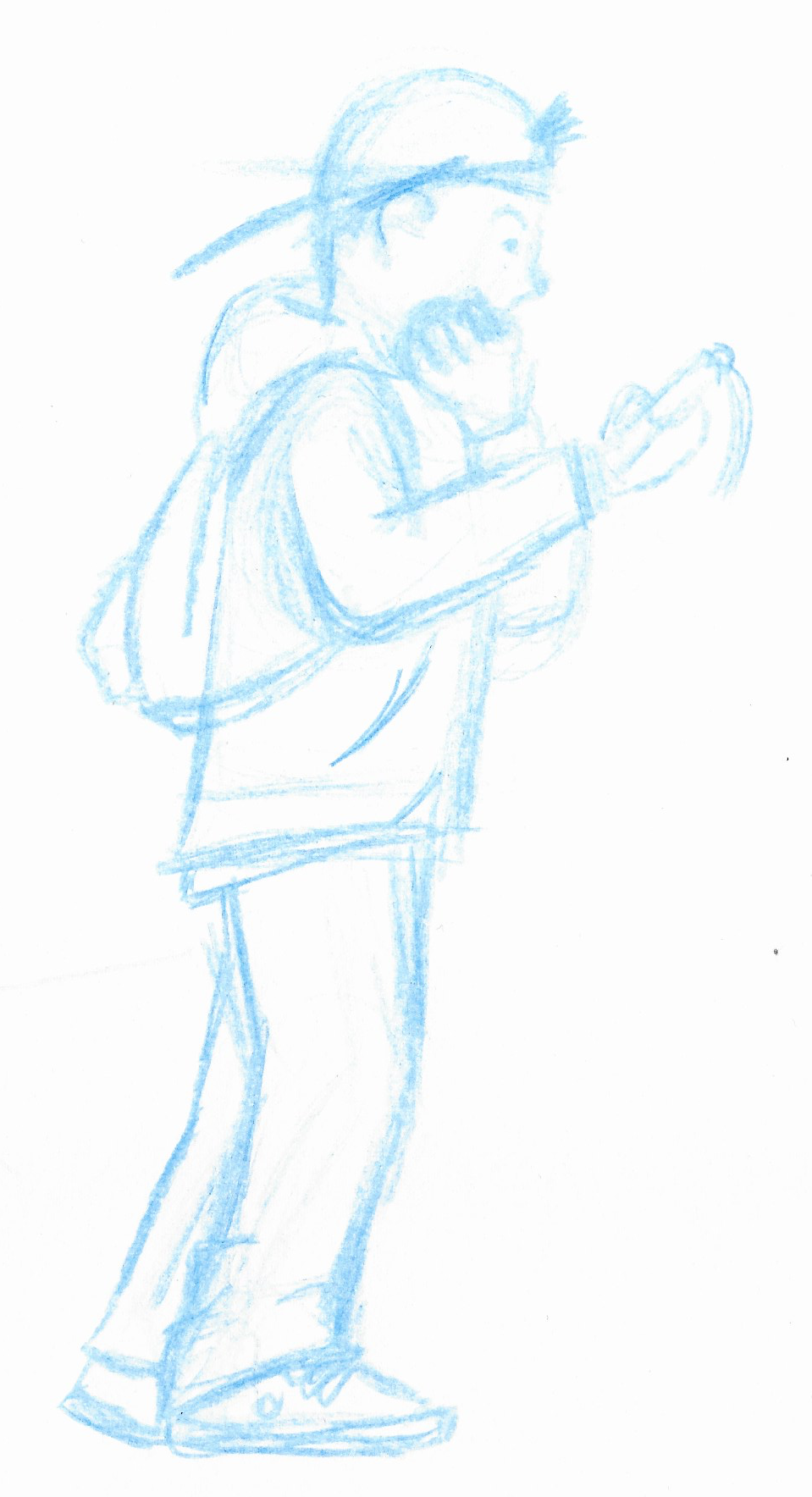
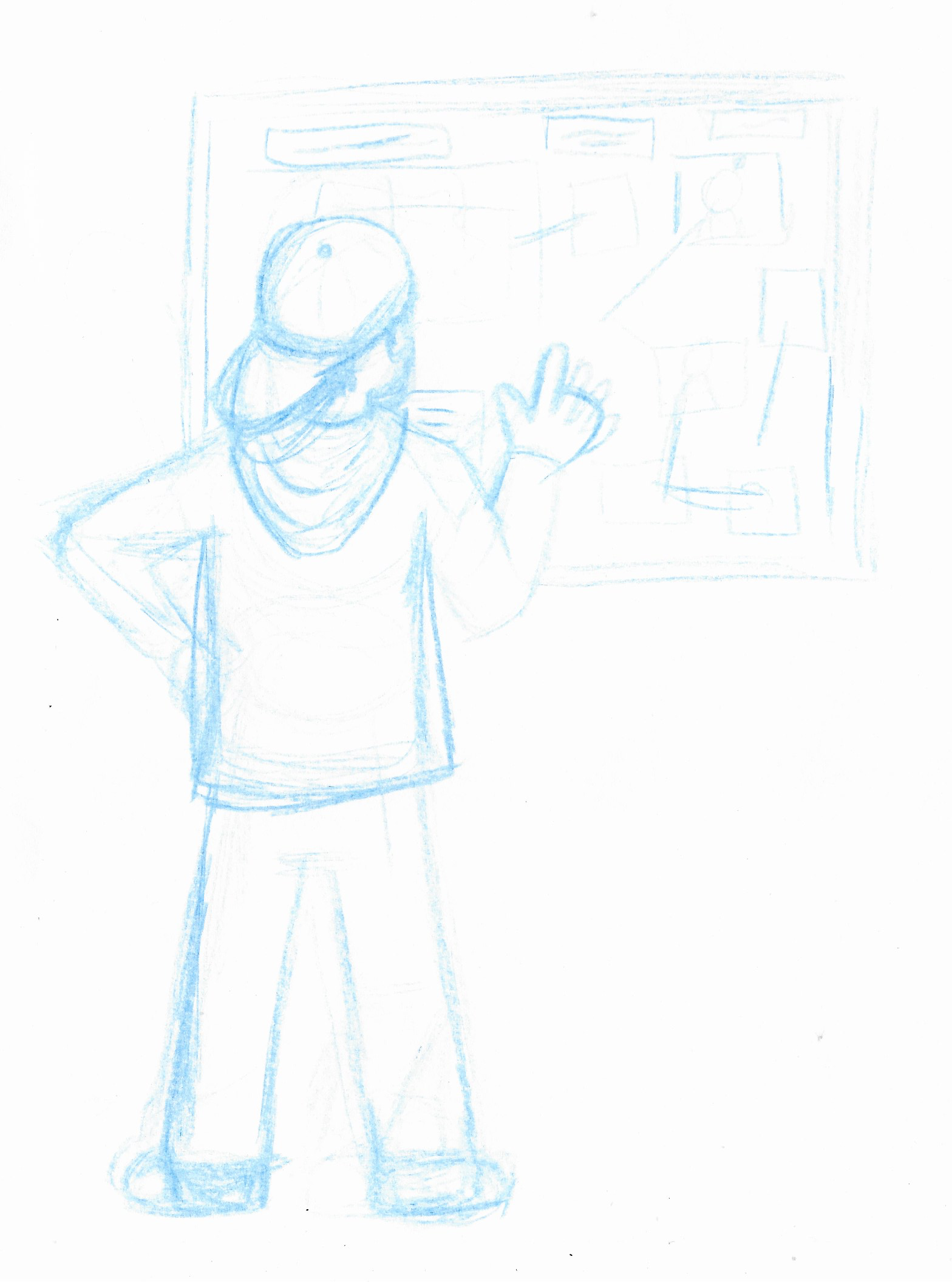
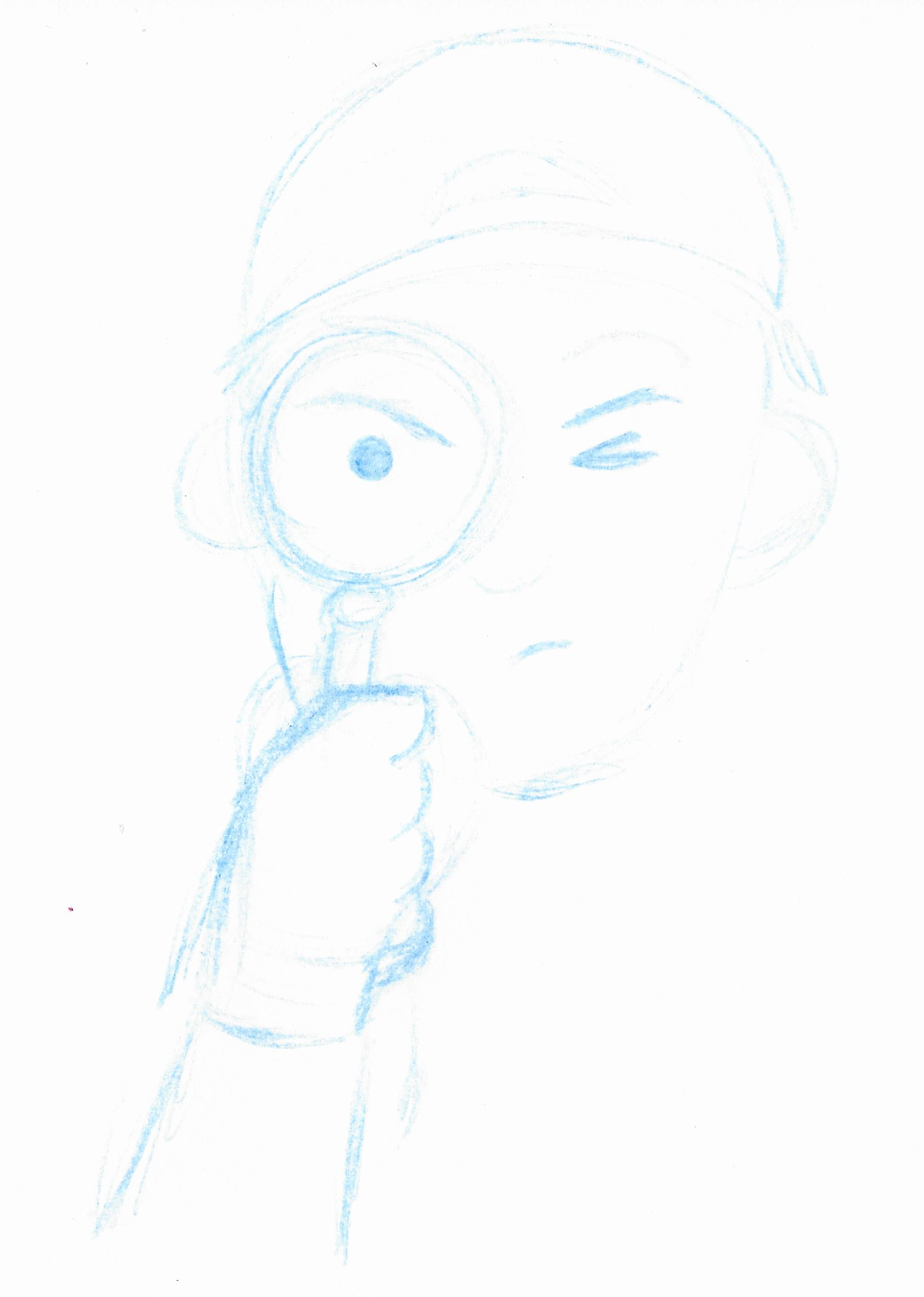
Therefore I moved onto fully focusing on my squirrel character. used the image below from a Google Image search as reference for each of the poses.
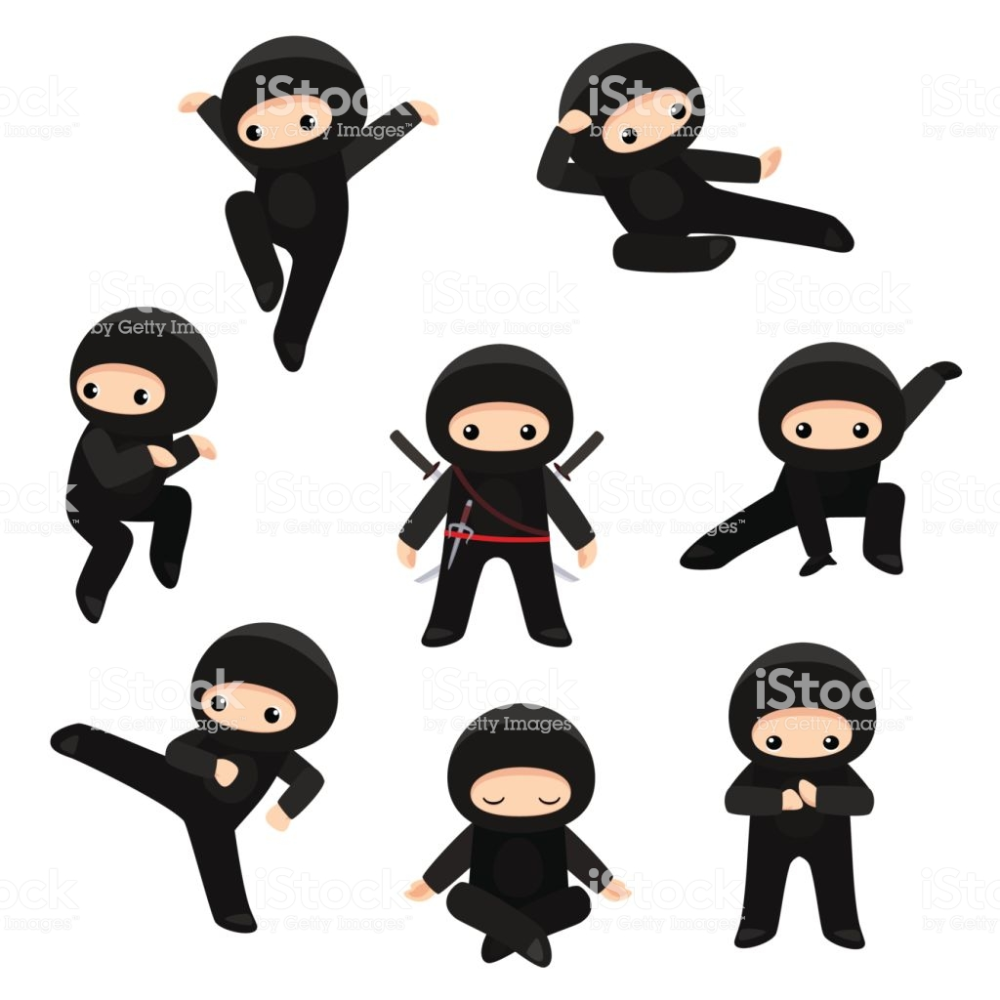
I drew some more thumbnails based on these, first roughly in blue pencil and then with graphite pencil, adding more detail. I scanned these into my computer, enlarged and printed them.
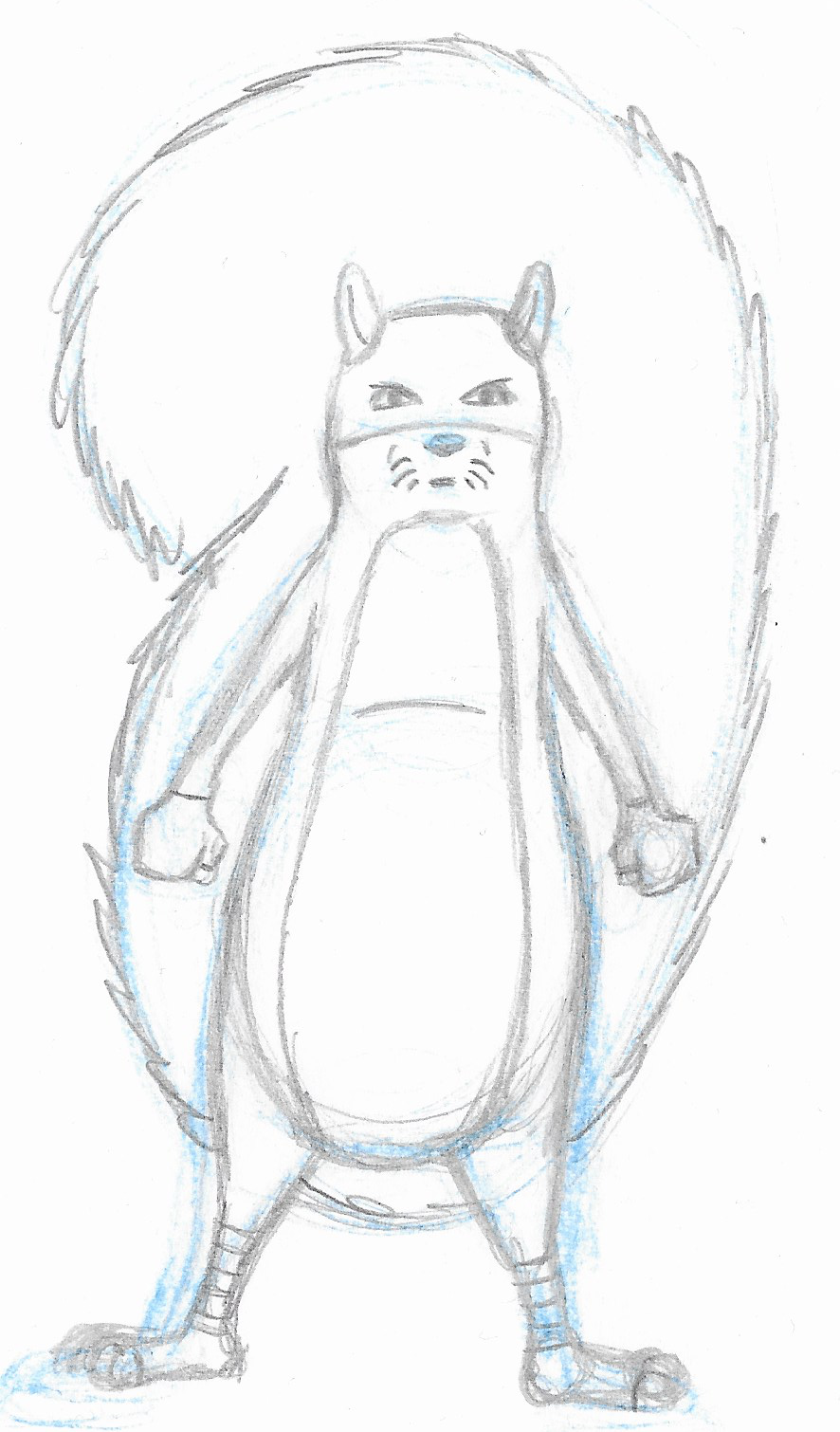
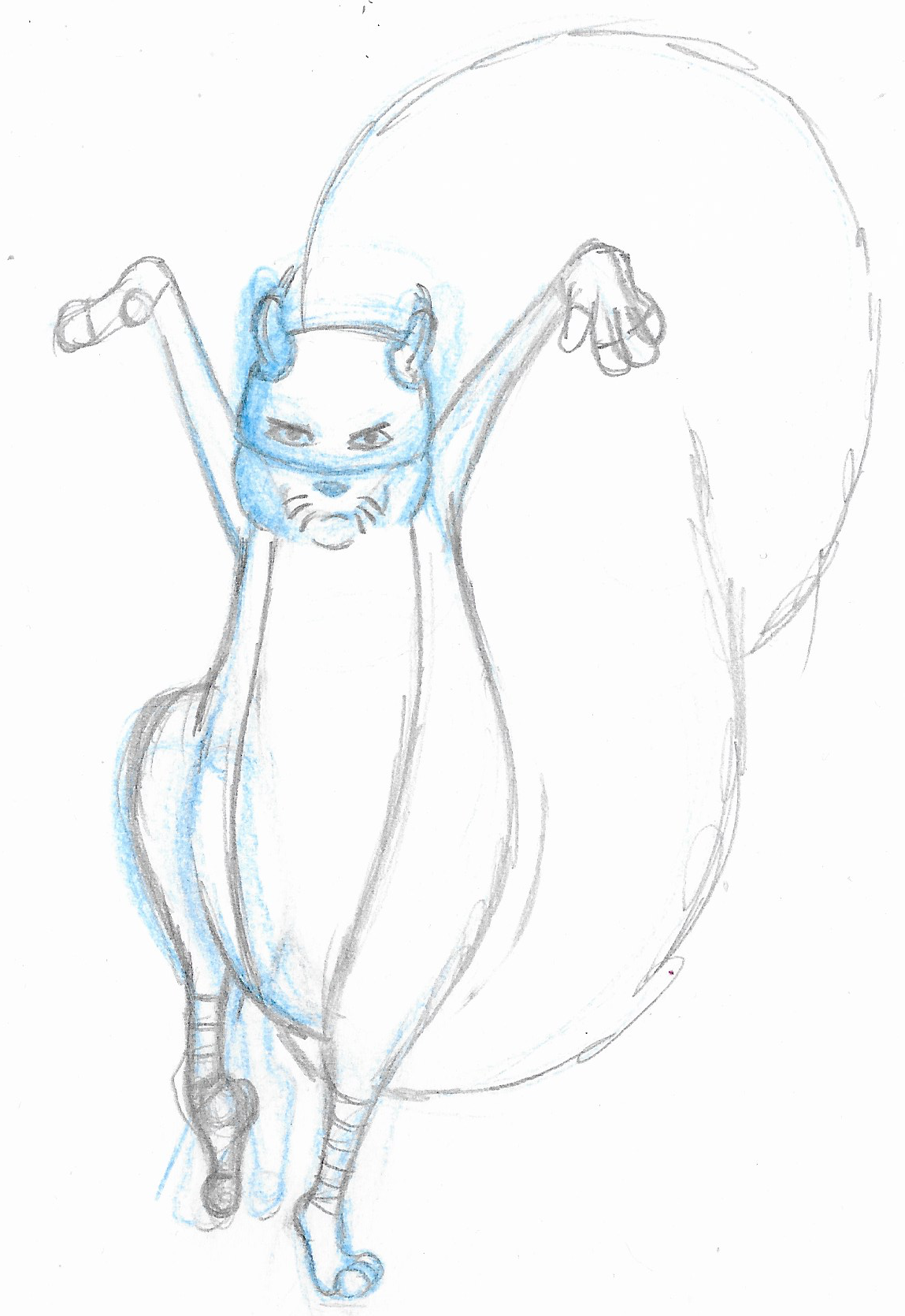
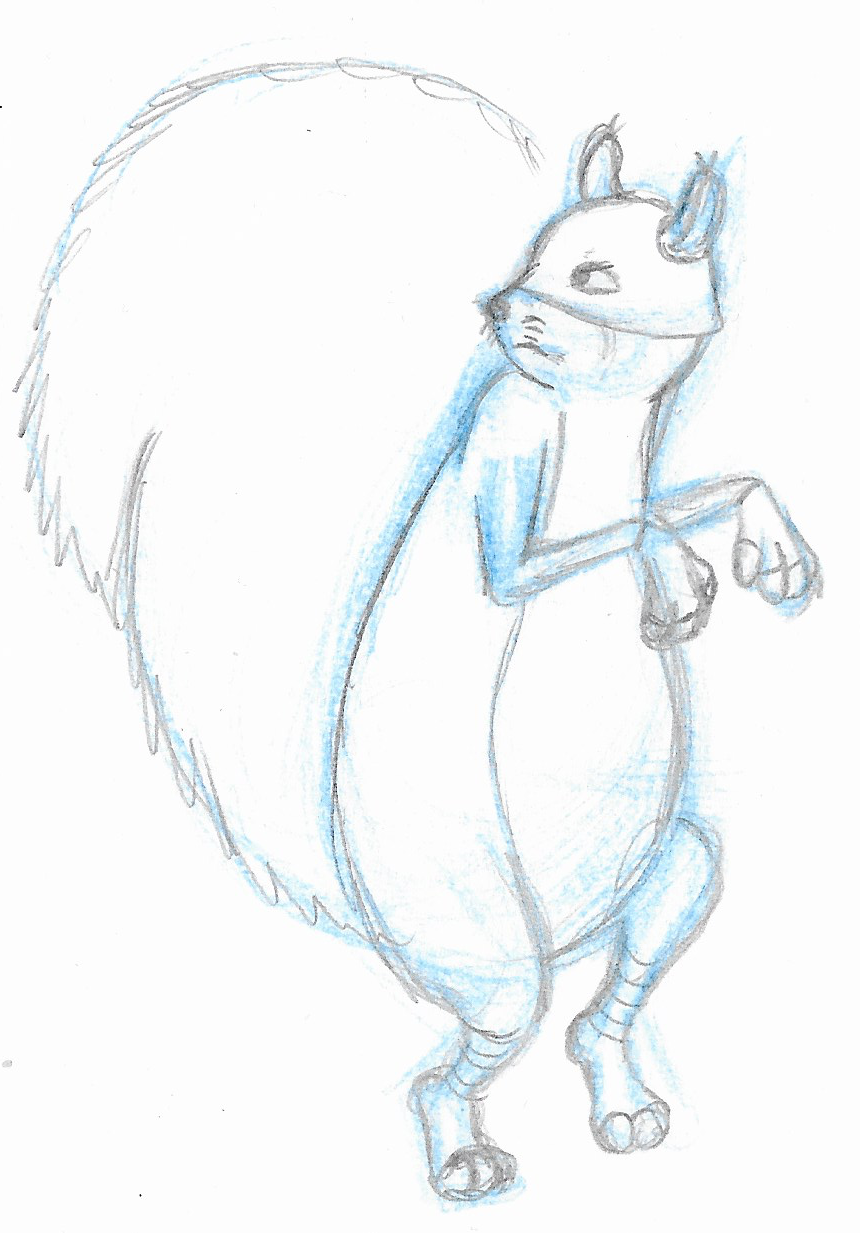
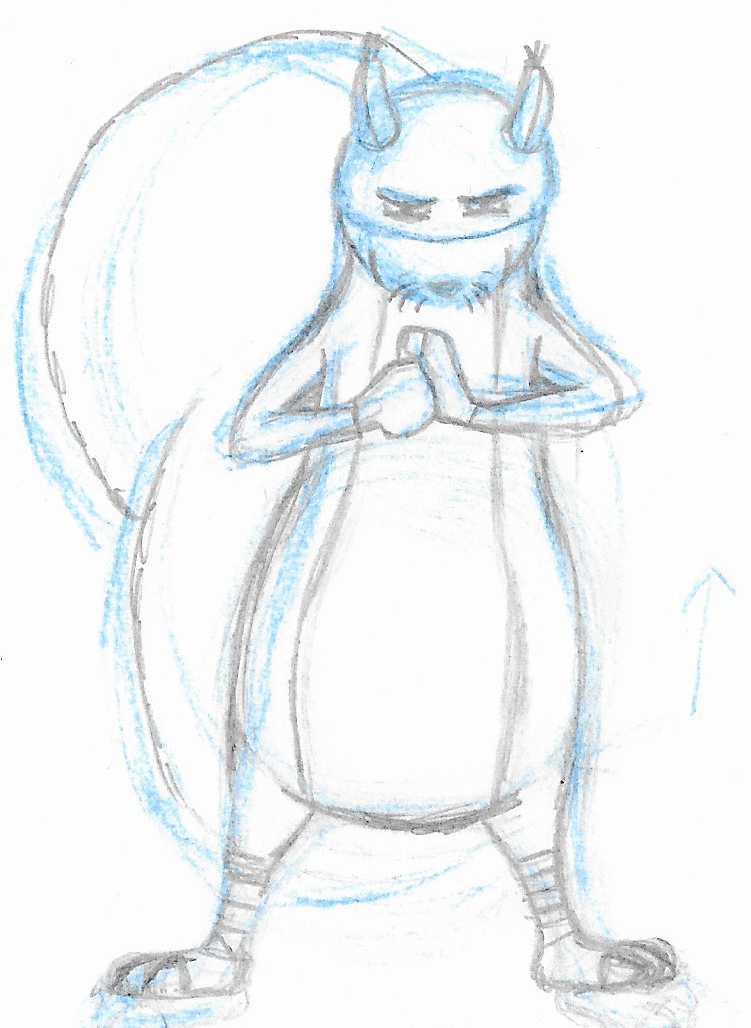
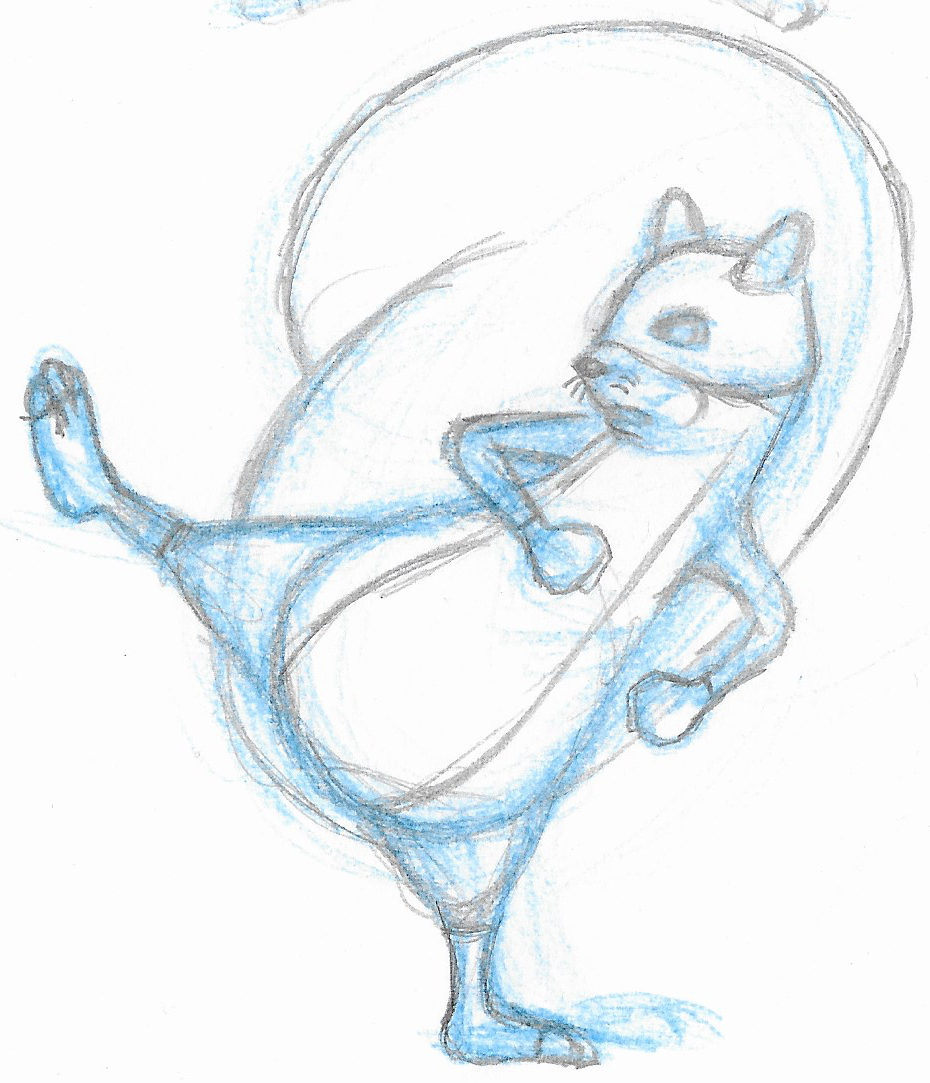
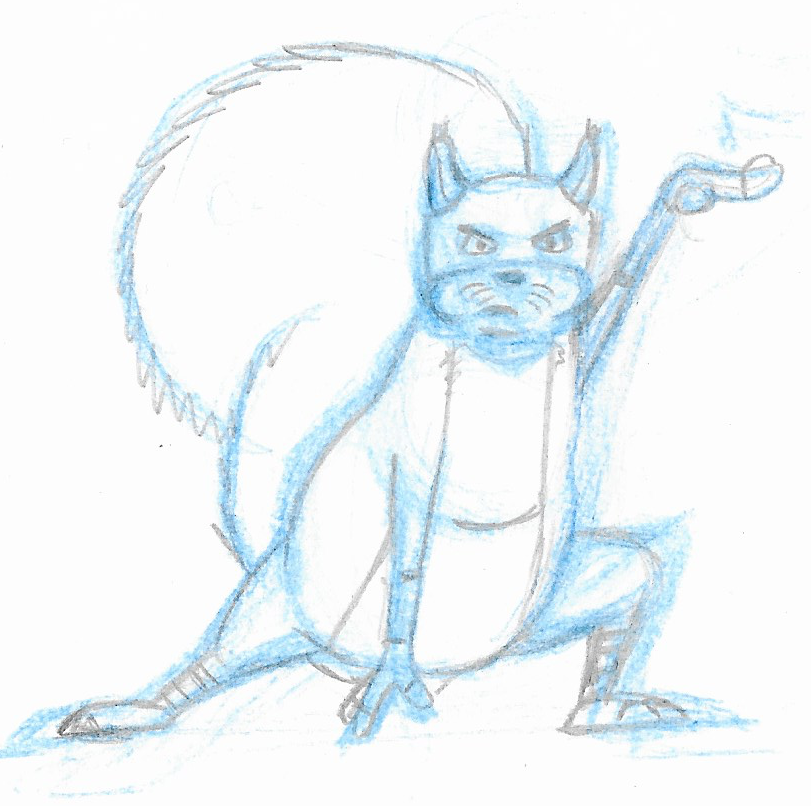
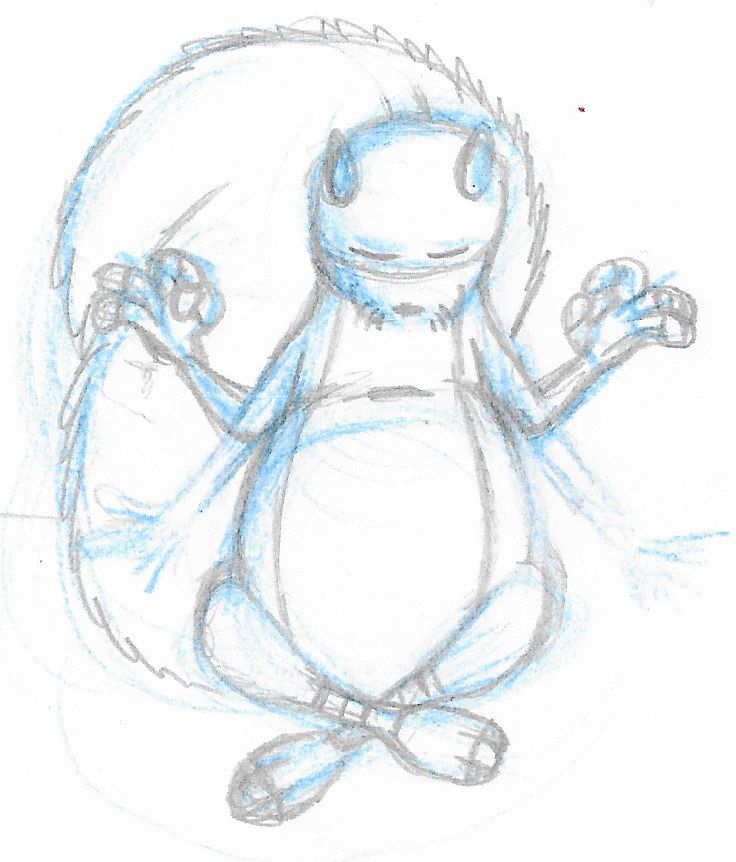
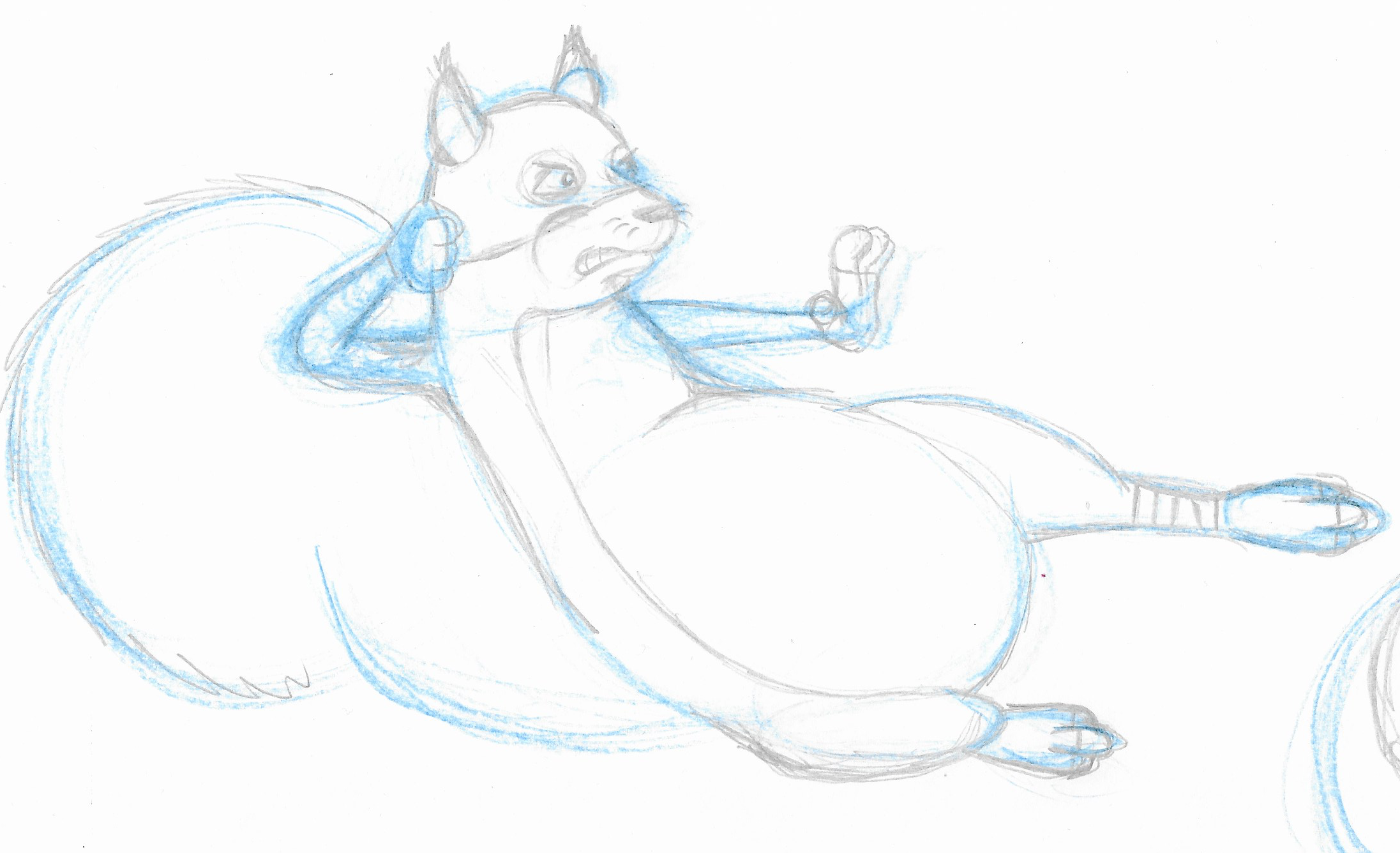
Refining Idea
Using my light-box I drew out more refined versions. I was not very happy with the drawings at this stage. I thought the character’s face looked more like a cat and there was too many differences between the character in each drawing, e.g. the body was longer in some than others and the back legs varied in terms of length and width. I also was not entirely sure how I had ended up doing so many drawings when the brief asked for one, but I must have got slightly carried away with my enthusiasm.
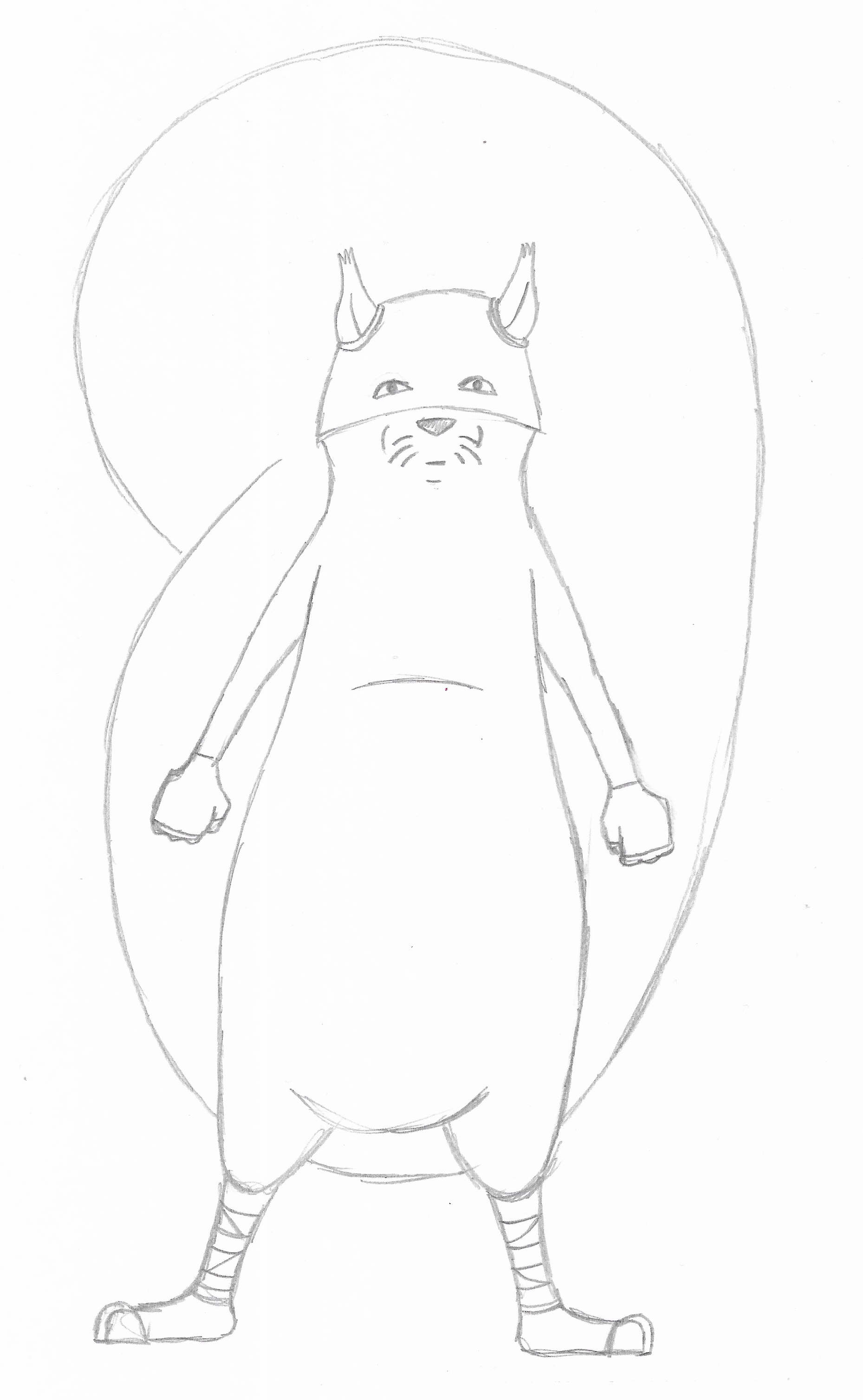
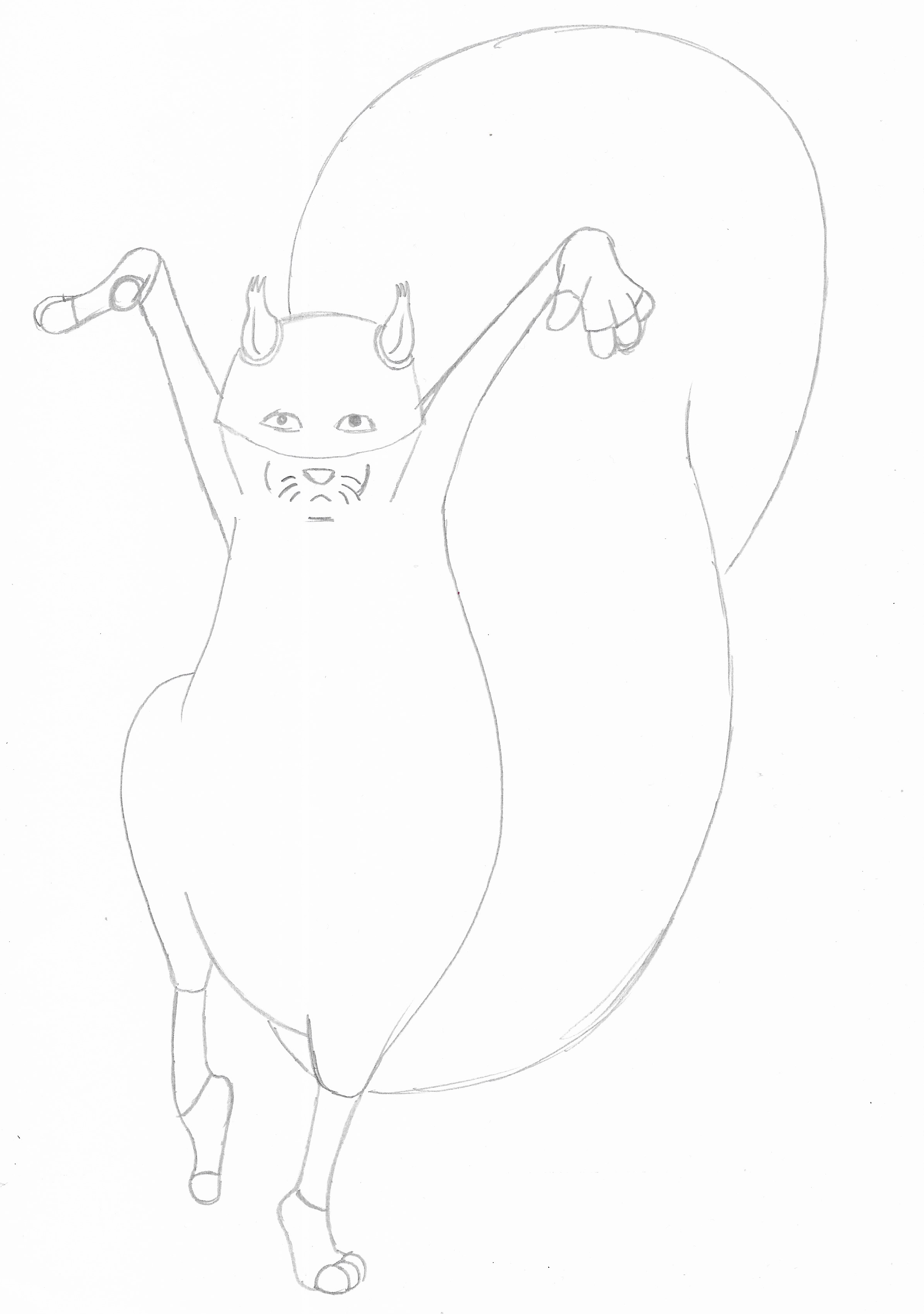
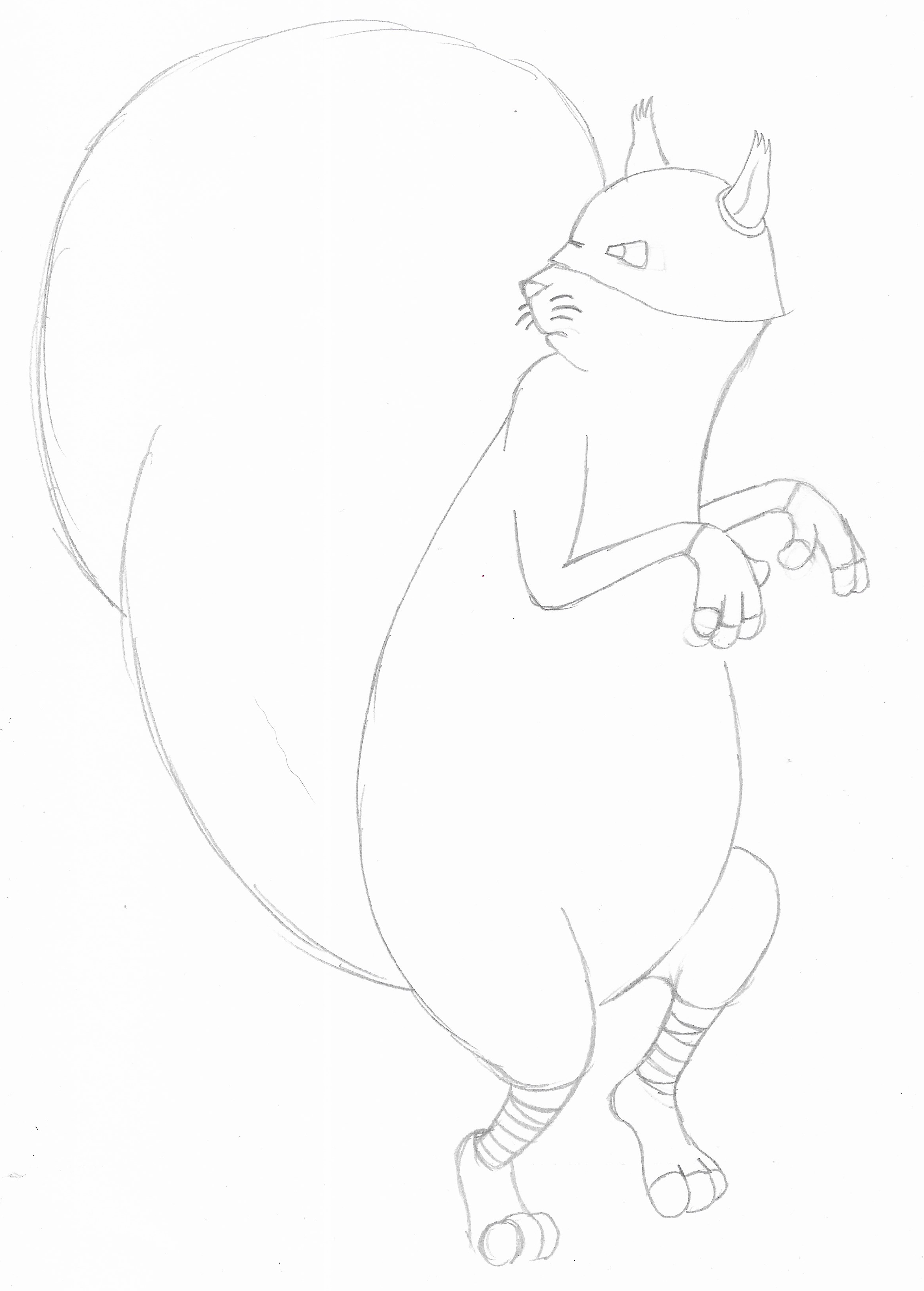
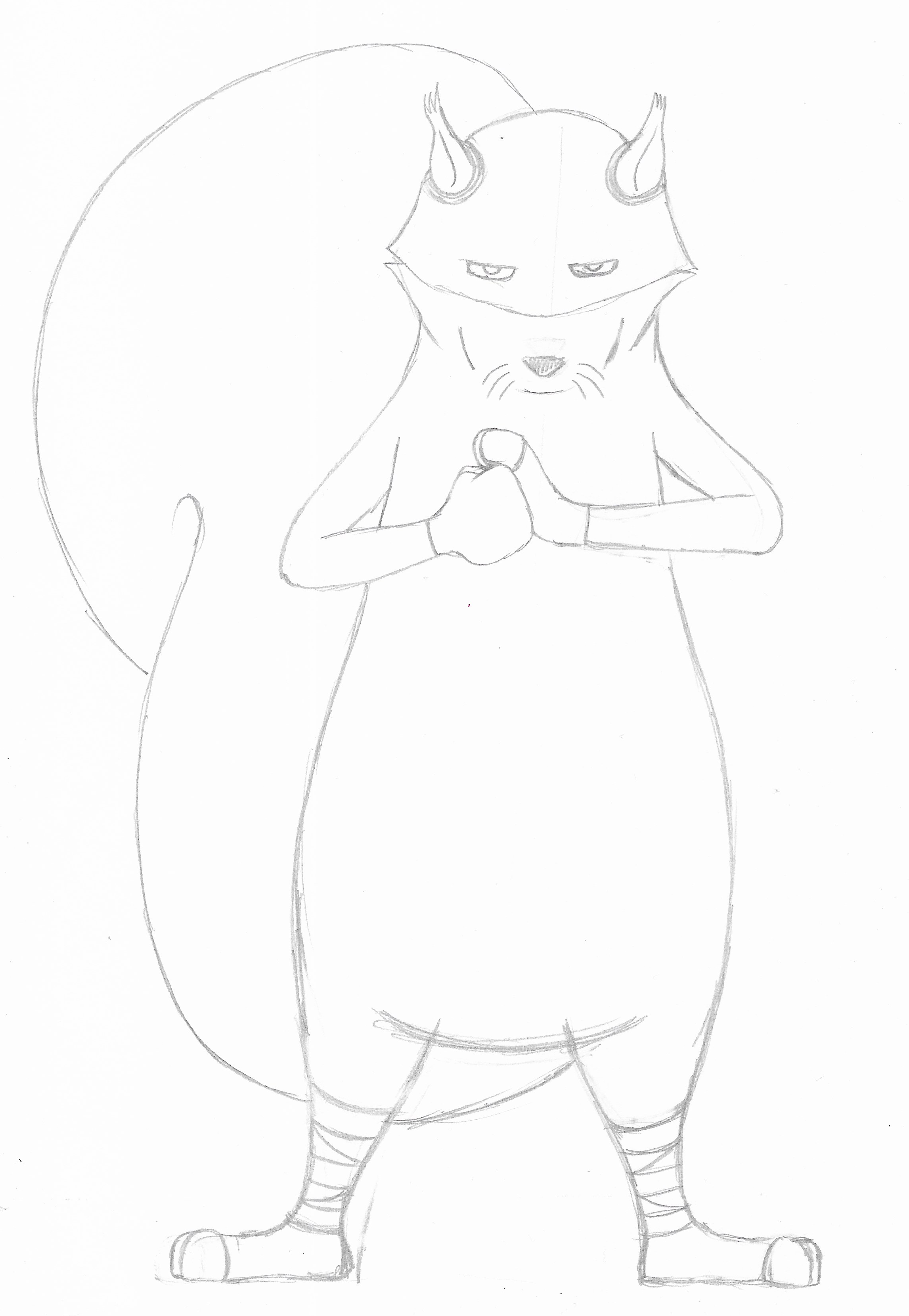
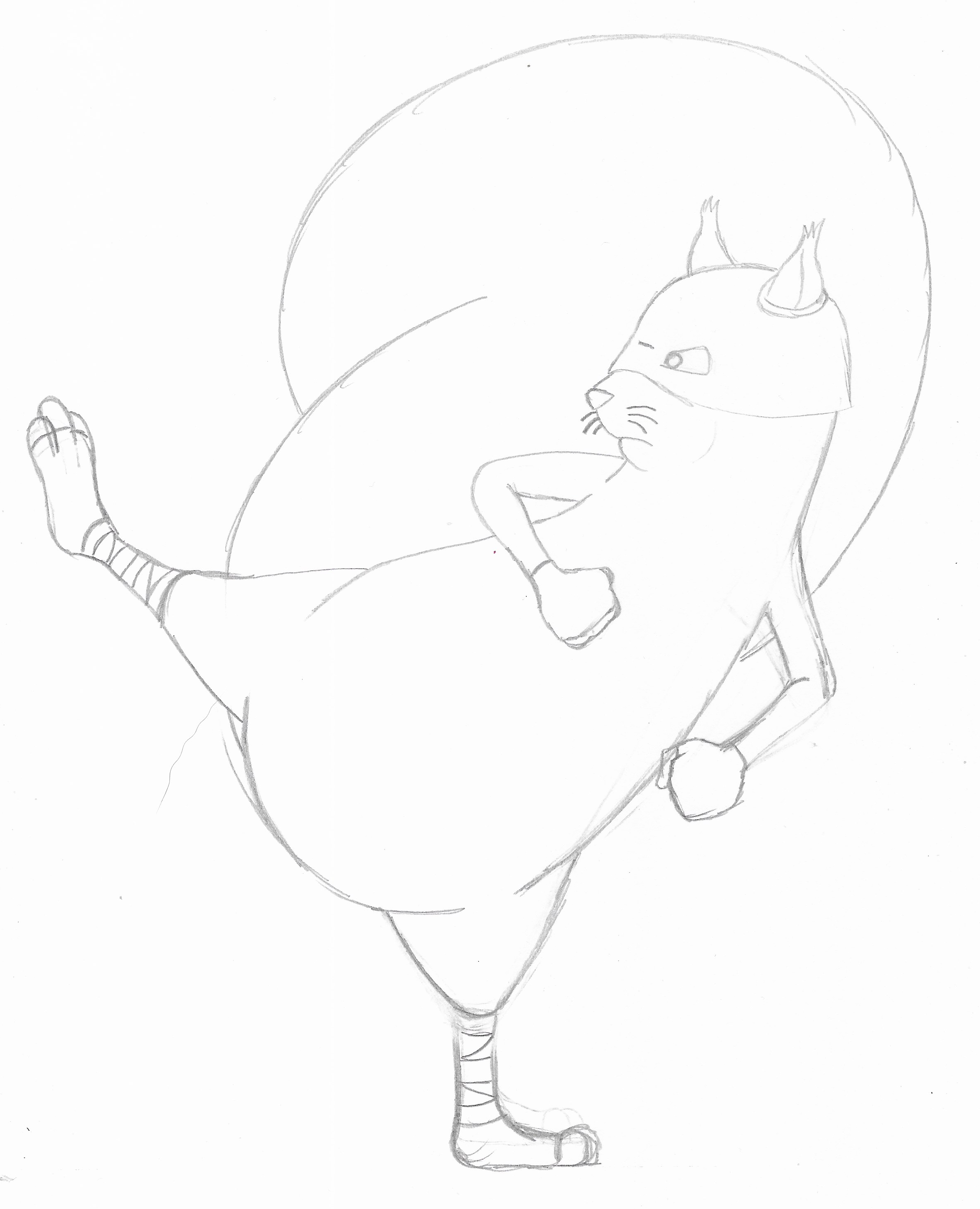
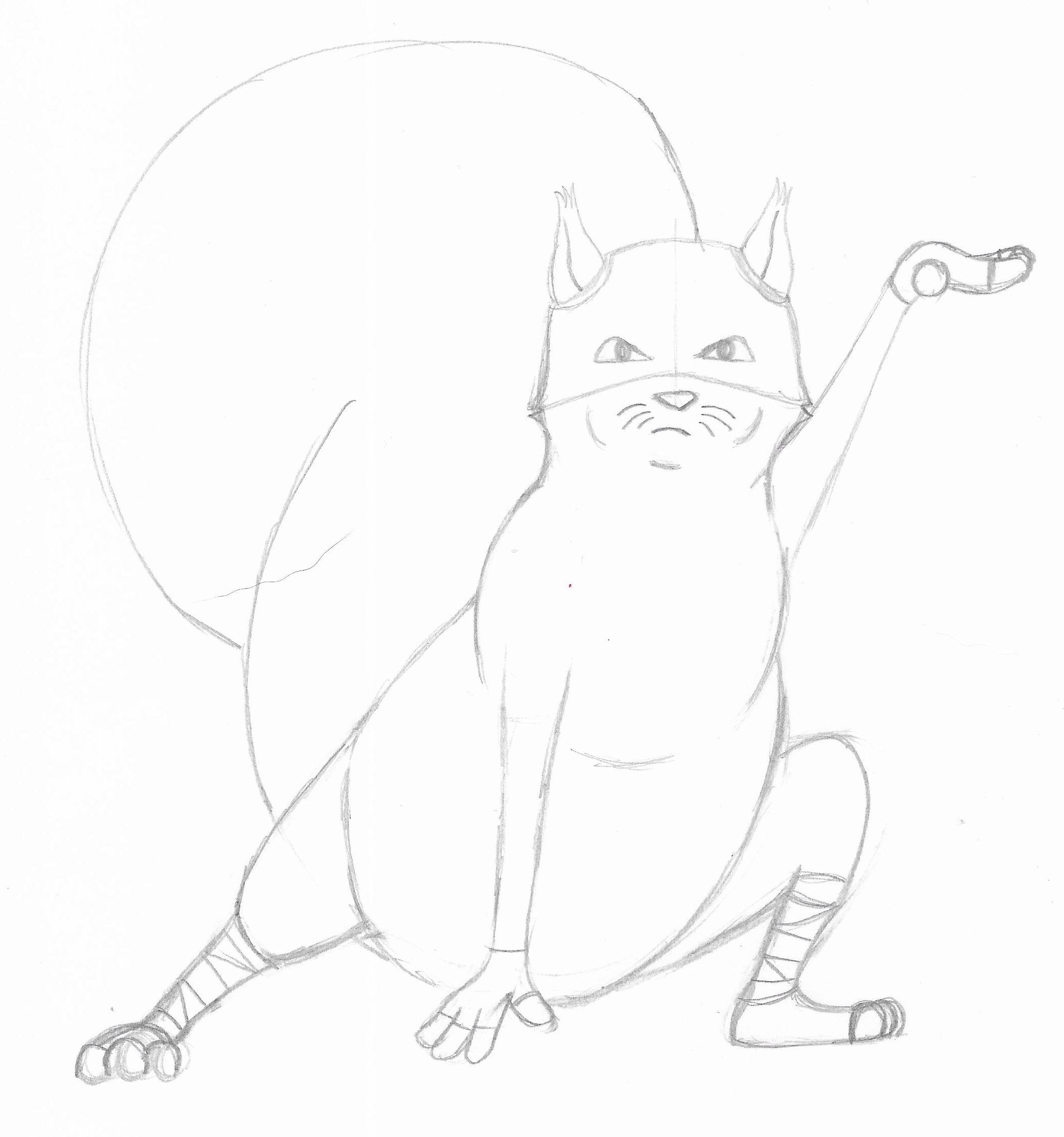
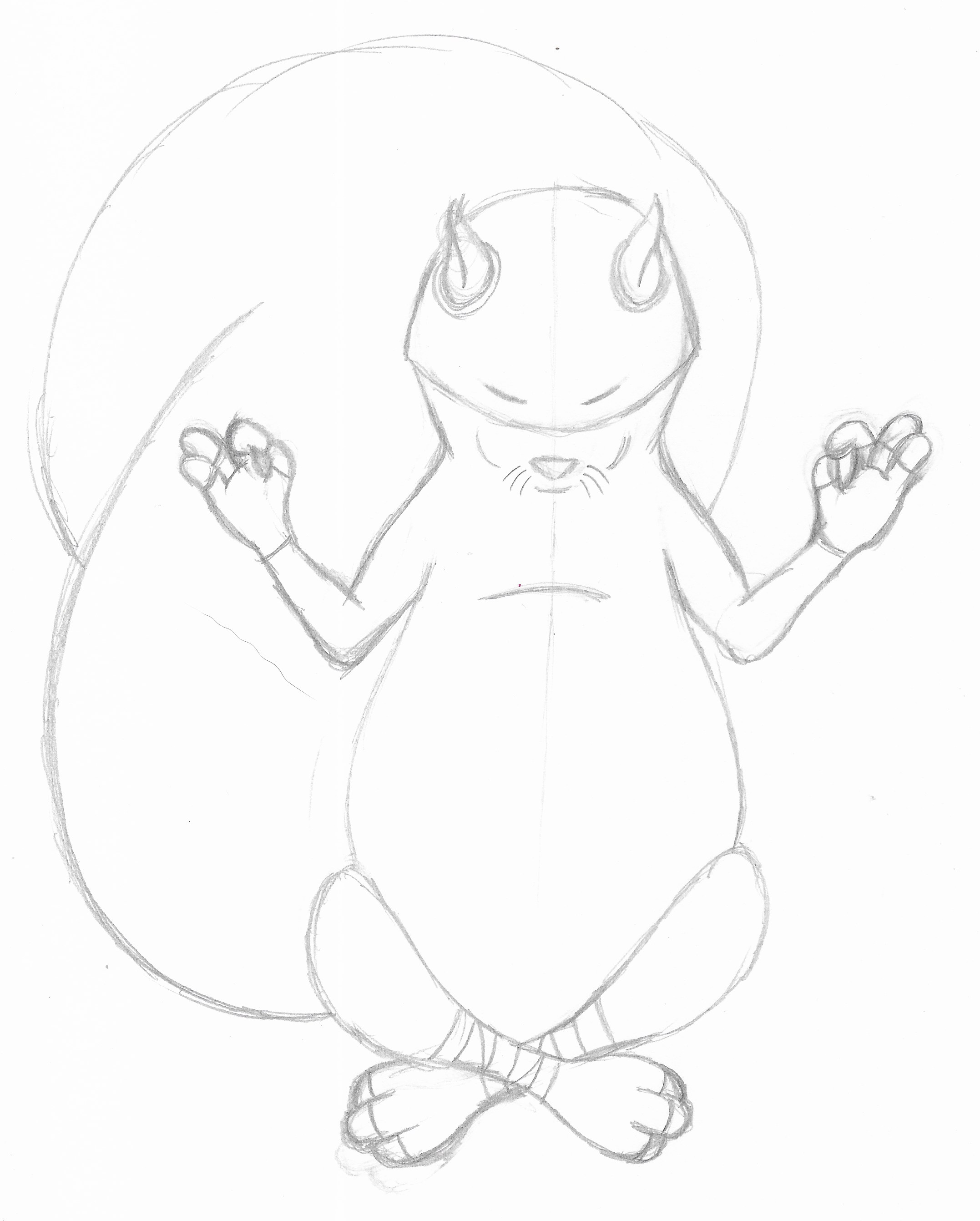
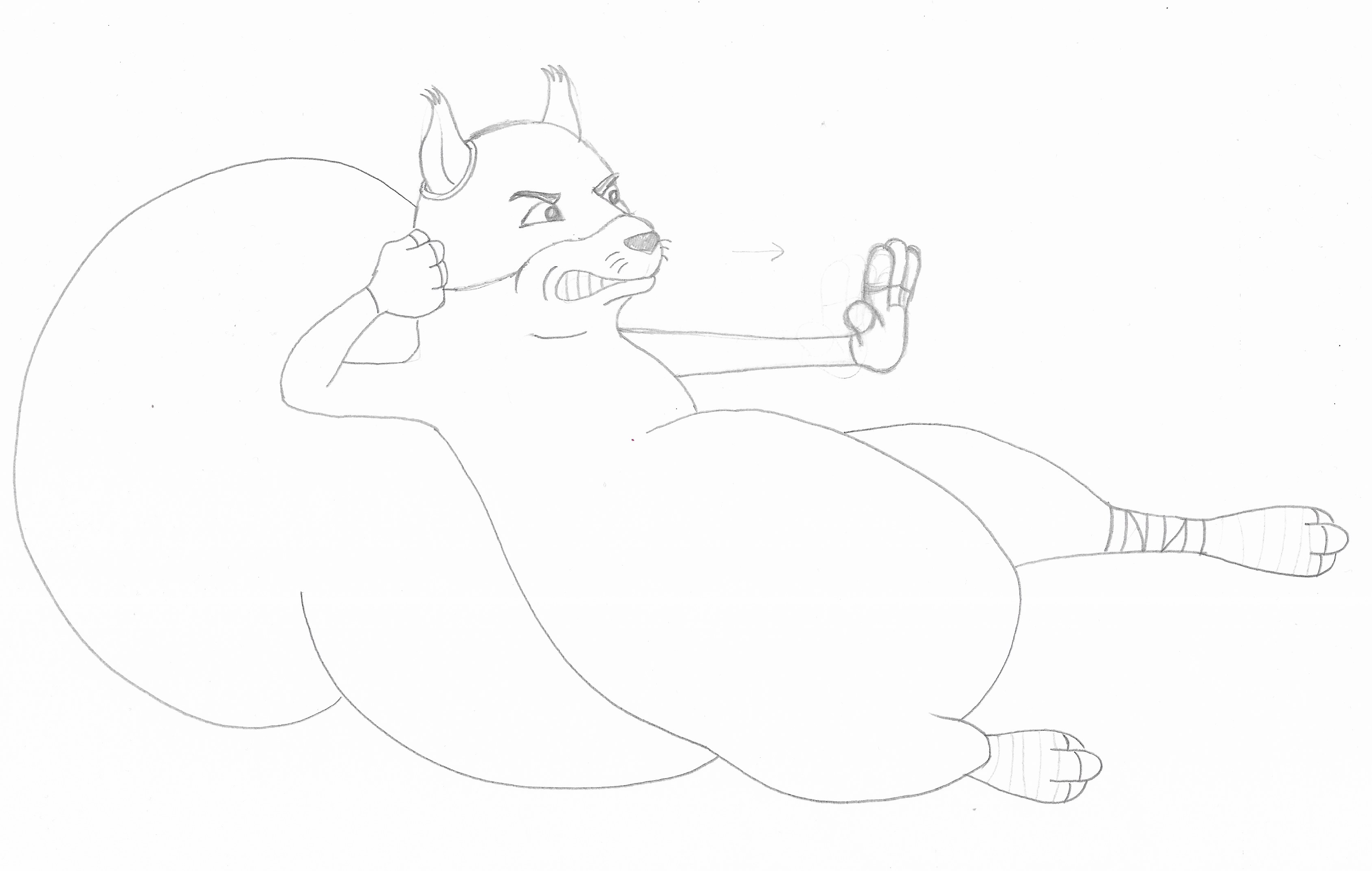
Ink Versions
I moved onto using a combination of a brush pen and 0.8 fineliner to create ink versions. I shortened the length of the body in some of these ones, which added some consistency to the designs. I also removed the whiskers, which helped the squirrel look less like a cat. The balance of the character in the first image below is not right
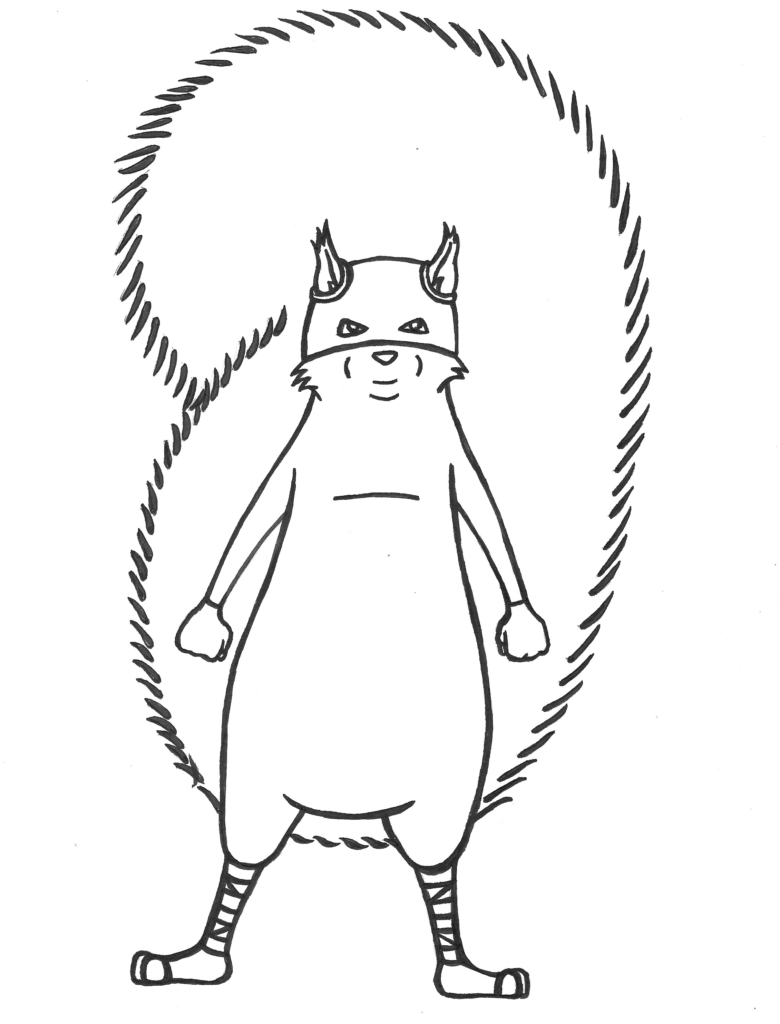
I flipped the image below to see whether it looked OK, but the balance is completely off and the character’s arms are not equal in size.
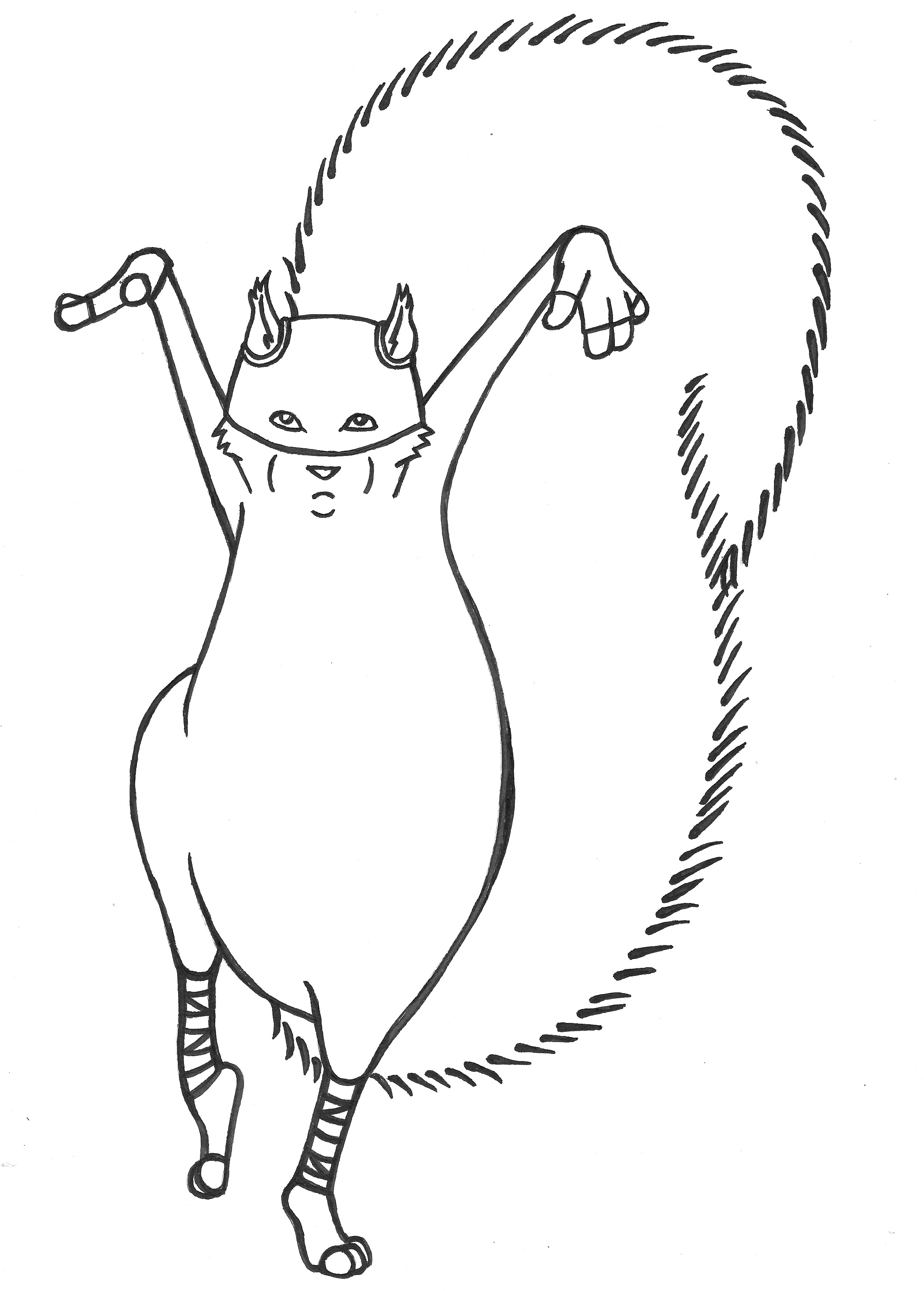
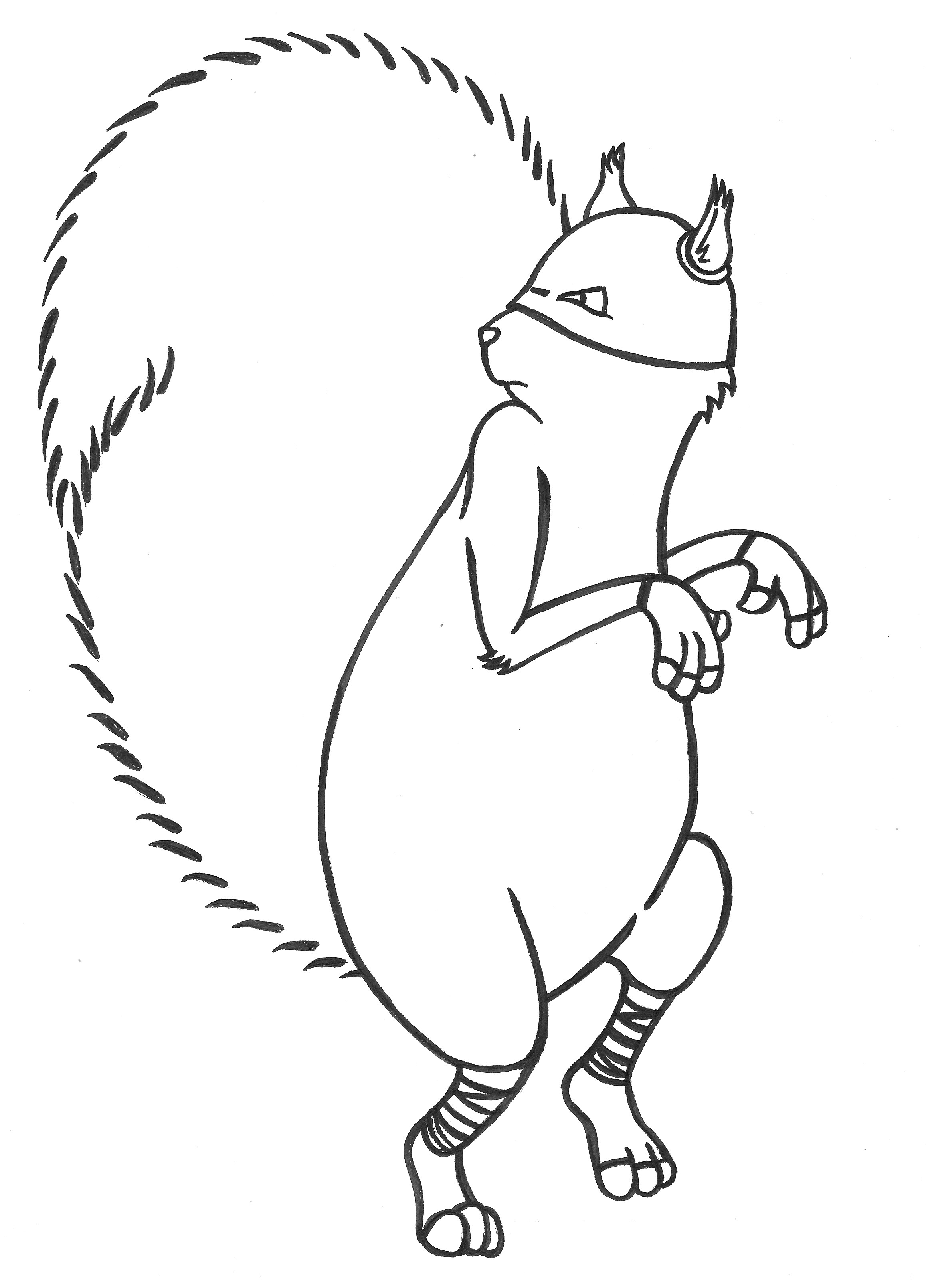
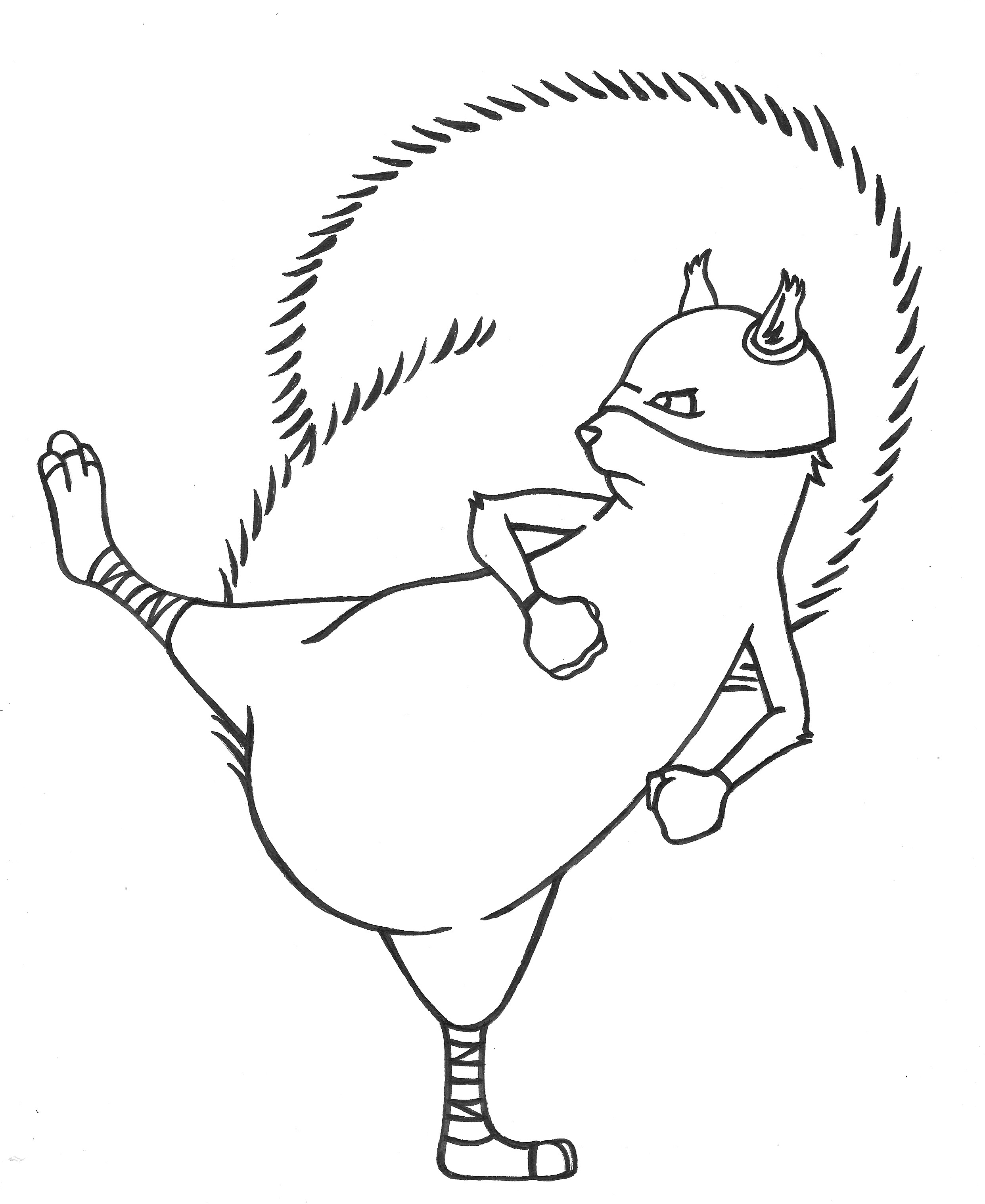
Again, I flipped the drawing below and the left eye is wrong and the body weight distribution is unbalanced.
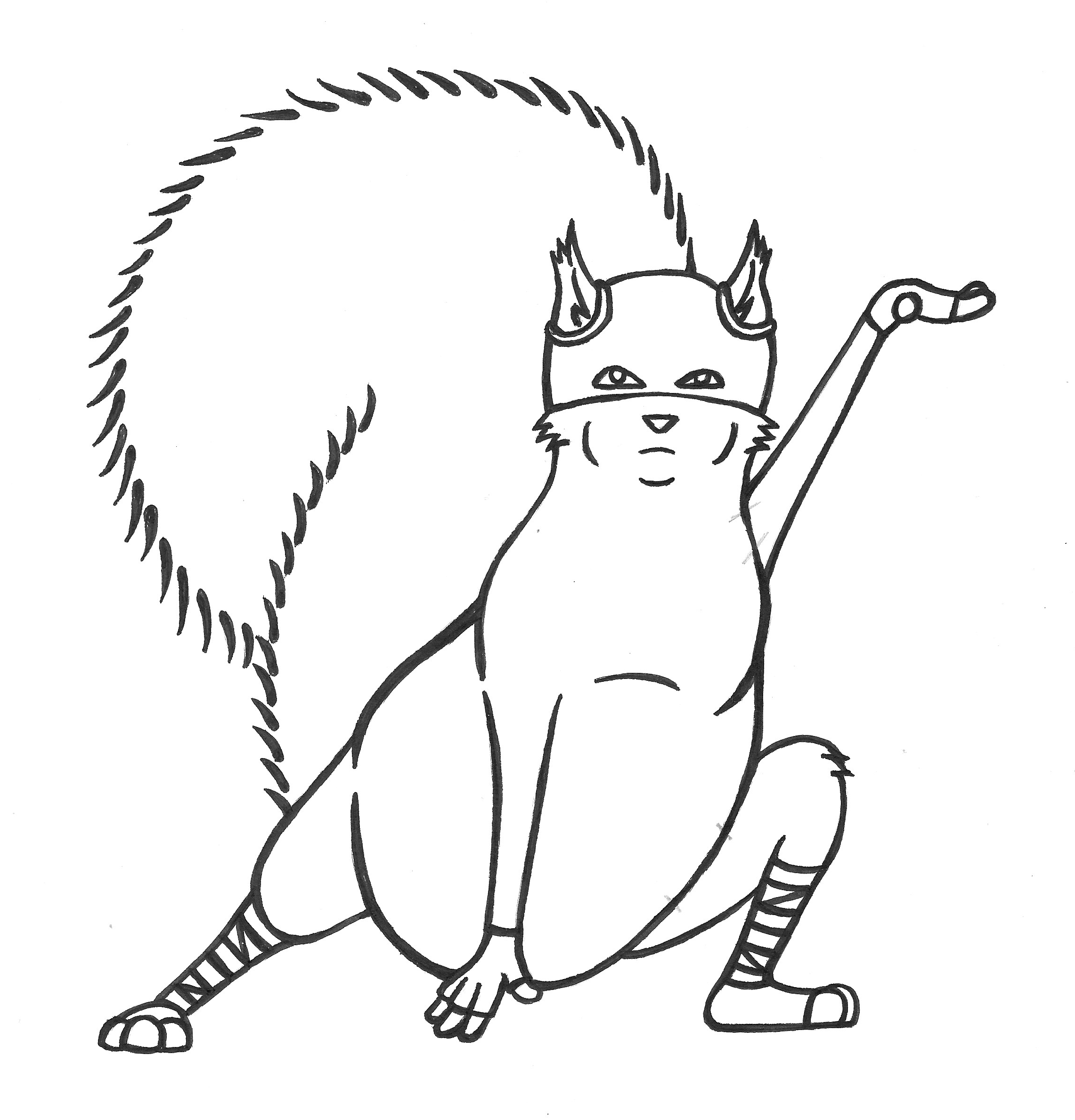
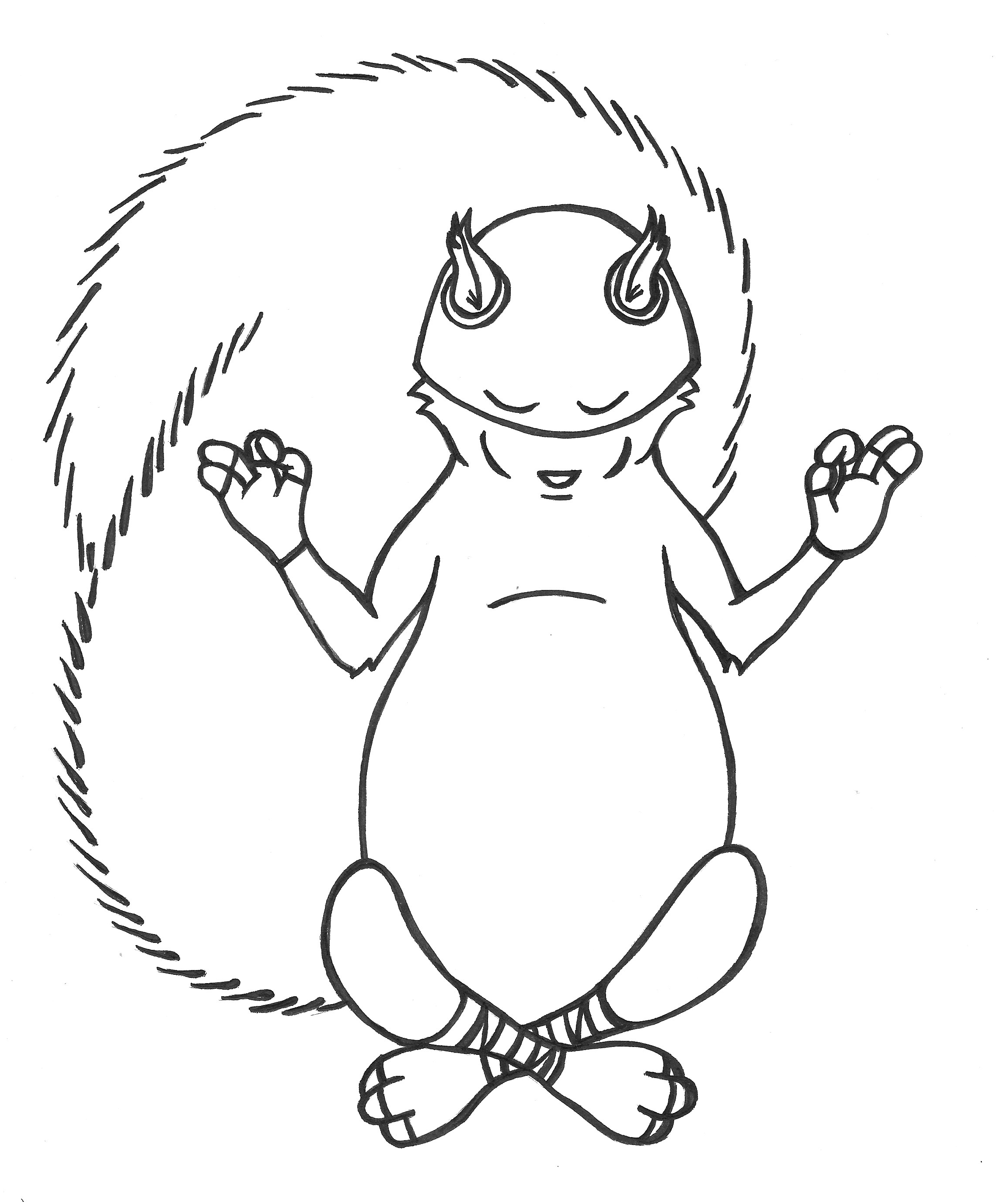
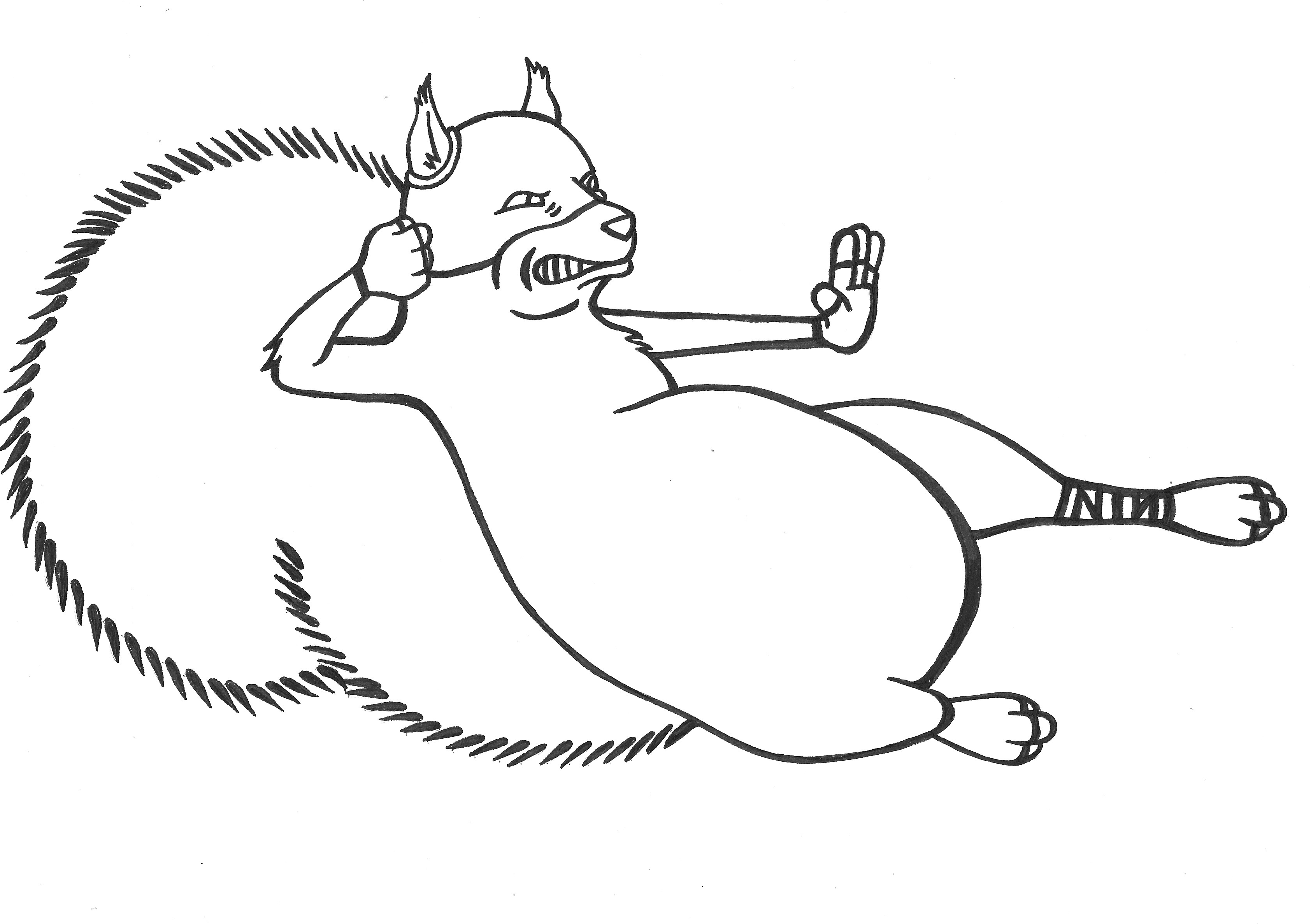
Overall I was a quite disappointed with my attempts. The only one I was more or less completely happy with was the final drawing above as I felt it captured the initial idea I had in my head.
Final Version
As the brief asked for a colour version of the design, I decided to scan my drawings into Illustrator and colour my favourite one. I spent some time cleaning up the lines, which I could not resist doing, and then added some flat colour. I had seen online that there are black squirrels, which I felt would be best suited for my ninja concept, so I made the fur very dark.
Once I lined up the drawings below, I was quite pleased to see how, despite their faults, they successfully worked as a sequence of images.
I then decided to quickly experiment with adding motion to my final colour image, so I made three copies with various opacity levels and evenly spaced these out. I thought this added movement quite effectively.
Final Thoughts
Character design is my absolute favourite area of illustration and I sometimes get quite frustrated with my skill level, which means I am unable to visually express the ideas I have circulating in my head. I realise that the only solution is to keep practicing. If there had been more time available I probably could have made better versions of all the designs.
In hindsight, it would have been better to create a character model sheet with accurate static front, back and side poses before moving onto more dynamic ones. I would have been able to use these as a basis to work from and have the measurements and such more planned out in my head before attempting the other poses.
Despite the above, I did enjoy this exercise and I was happy with my final colour design.
Reflections After Tutor Feedback
I was not happy with the outcome of this exercise and I knew I could certainly make improvements. Taking on board my tutor’s comments, I drew static front, back and side views, which were really helpful as I redrew the more dynamic ones. The process involved plenty of rubbing out and checking the positioning/balance of the squirrel using my light-box. The pencil versions can be seen below.
I felt these revised drawings were much more satisfactory than the original versions and were closer to the image of the character I had in mind when I first thought of the idea of a ‘squirrel ninja’. I was most happy with the back view, the crouch and the jump kick. I decided to select the latter two and see if I could make ‘finished’ versions.
For the crouching pose I used a brush and ink. I found it quite difficult to control as I was trying to consider line weight, as suggested by my tutor. I worked on A4 and in hindsight it probably would have been beneficial to work on a larger scale. The only part that I was relatively pleased with was the tail, for which I used a tiny pipe-cleaner brush to recreate the bushy texture. On a bigger scale, using a larger brush of this type would be quite effective, but because the brush was so small I could not get much ink on it and then it would blot large areas. However, in the select areas that it worked, I thought the texture produced was reminiscent of a squirrel’s tail. By the time I got to the arm, I was quite disheartened and could not think how to proceed.
I put the above attempt to one side and focused on the second illustration. I used a 0.3 fineliner to draw the outline of the jump-kick squirrel and then, using a 0.1 fineliner, gradually filled in the fur. I attempted to create a fur-like texture. I then used a different style of mark-making for the gloves and mask. For the tail, I really focused on the direction of the strokes whilst ensuring they could be differentiated from the body fur. I then returned to the body fur, adding more strokes, trying to hint at shadows. I left the leg wrappings as white, except for a bit of shadow before, finally, redrawing over the outline.
Although not completely happy with the all of the marks I made (some of the strokes are too long or dark) I was really pleased with the new version of the final drawing. I liked the dynamic feel and I felt I had got the proportions right. I was particularly happy with the tail’s positioning and (most of) the texture.
Overall, I was glad I returned to this exercise as I knew I could do better and I feel I have proved this to myself.
Extra
I returned to this exercise one more time to fill in the fur of the back view of the squirrel as I quite liked the pose. I used a similar approach to the one above, but this time I did not add a solid outline, trying instead to have the fur texture as the edge. The main issue I have with this version is the right upper arm, which is too ‘bulgy’, however, I thought that the omission of a hard outline was quite successful. I need to continue working on my mark-making skills.
References
Alice-in-Wonderland.net, (n.d.). Alice in Wonderland Pictures. [online] Available at: https://www.alice-in-wonderland.net/resources/pictures/alices-adventures-in-wonderland/ [Accessed 1 December 2021].
Character Design References, (2019). Art of King Fu Panda (Trilogy). [online] Character Design References. Available at: https://characterdesignreferences.com/art-of-animation-7/art-of-kung-fu-panda-trilogy [Accessed 1 December 2021].
Knudde, K. (2021). Ronald Searle. [online] Lambiek Comiclopedia. Available at: https://www.lambiek.net/artists/s/searle_ronald.htm [Accessed 1 December 2021].
Oni Press, (n.d.). Oni Press. [online] Available at: https://onipress.com [Accessed 1 December 2021].
Paddington, (n.d.). Illustrators. [online] Available at: https://www.paddington.com/gb/read/illustrators/ [Accessed 1 December 2021].
Pearson, L. (n.d.). Illustrations and Comics. [online] Luke Pearson. Available at: https://lukepearson.com/Hilda [Accessed 1 December 2021].
Roberts, P. (n.d.). Orlando the Marmalade Cat. [online] Purr-n-Fur UK, Feline Folios. Available at: http://purr-n-fur.org.uk/folios/orlando.html [Accessed 1 December 2021].
The Followers of Rupert the Bear, (n.d.). Mary Tourtel created Rupert in 1920 for the Daily Express. [online] Available at: https://followersofrupertbear.co.uk/creators/mary-tourtel/ [Accessed 1 December 2021].
Toon Books, (n.d.). Toon Books. [online] Available at: https://www.toon-books.com.html [Accessed 1 December 2021].
Wikipedia, (n.d.). Bobby Bear. [online] Available at: https://en.wikipedia.org/wiki/Bobby_Bear [Accessed 1 December 2021].
Wikipedia, (n.d.). Bone (comics). [online] Available at: https://en.wikipedia.org/wiki/Bone_(comics) [Accessed 1 December 2021].
Wikipedia, (n.d.). Ronald Searle. [online] Available at: https://en.wikipedia.org/wiki/Ronald_Searle [Accessed 1 December 2021].
Wikipedia, (n.d.). St Trinian’s School. [online] Available at: https://en.wikipedia.org/wiki/St_Trinian%27s_School [Accessed 1 December 2021].
Wikipedia, (n.d.). Teddy Tail. [online] Available at: https://en.wikipedia.org/wiki/Teddy_Tail [Accessed 1 December 2021].
Wikipedia, (n.d.). Tiny Titans. [online] Available at: https://en.wikipedia.org/wiki/Tiny_Titans [Accessed 1 December 2021].
Wikipedia, (n.d.). Winnie the Pooh. [online] Available at: https://en.wikipedia.org/wiki/Winnie-the-Pooh [Accessed 1 December 2021].
Wildlife World, (n.d.). Squirrel Facts. [online] Available at: https://wildlifeworld.co.uk/pages/squirrels [Accessed 1 December 2021].
